Discover the Art and Impact of Rhinoplasty Through Real Patient Stories
This comprehensive gallery showcases 50 real patient transformations, revealing the diverse possibilities and outcomes of rhinoplasty. From bulbous to wide noses, from subtle refinements to corrective revisions, each case highlights unique structural and aesthetic challenges overcome by skilled surgical techniques. Witness how rhinoplasty not only reshapes noses but also restores confidence and facial harmony, demonstrated through before-and-after photos and detailed patient narratives covering a wide range of ages and concerns.
Rhinoplasty Procedures and Long-Term Outcomes
- Bulbous tip rhinoplasty reshapes excessive cartilage for a more natural contour.
- Wide nose narrowing is achieved through lateral nasal osteotomy to create proportionate facial balance.
- Button nose reshaping involves tip refinement to produce a delicate, harmonious facial appearance.
- Dorsal hump correction removes bump on nasal bridge for a smoother, natural profile.
- Nostril reduction via alar base resection improves nasal symmetry and proportionality.
- Ethnic rhinoplasty respects cultural features while refining nasal shape, considering skin thickness.
- Revision rhinoplasty uses cartilage grafts and structural support to restore shape and function.
- Open rhinoplasty provides direct access for complex deformities, with long-lasting aesthetic results.
- Septal reconstruction improves breathing and restores nasal support, ensuring functional and aesthetic benefits.
- Long-term rhinoplasty results are durable, often lasting over 13 months to years, with structural reinforcement.
1. Bulbous Tip Refinement for Natural Contour Enhancement
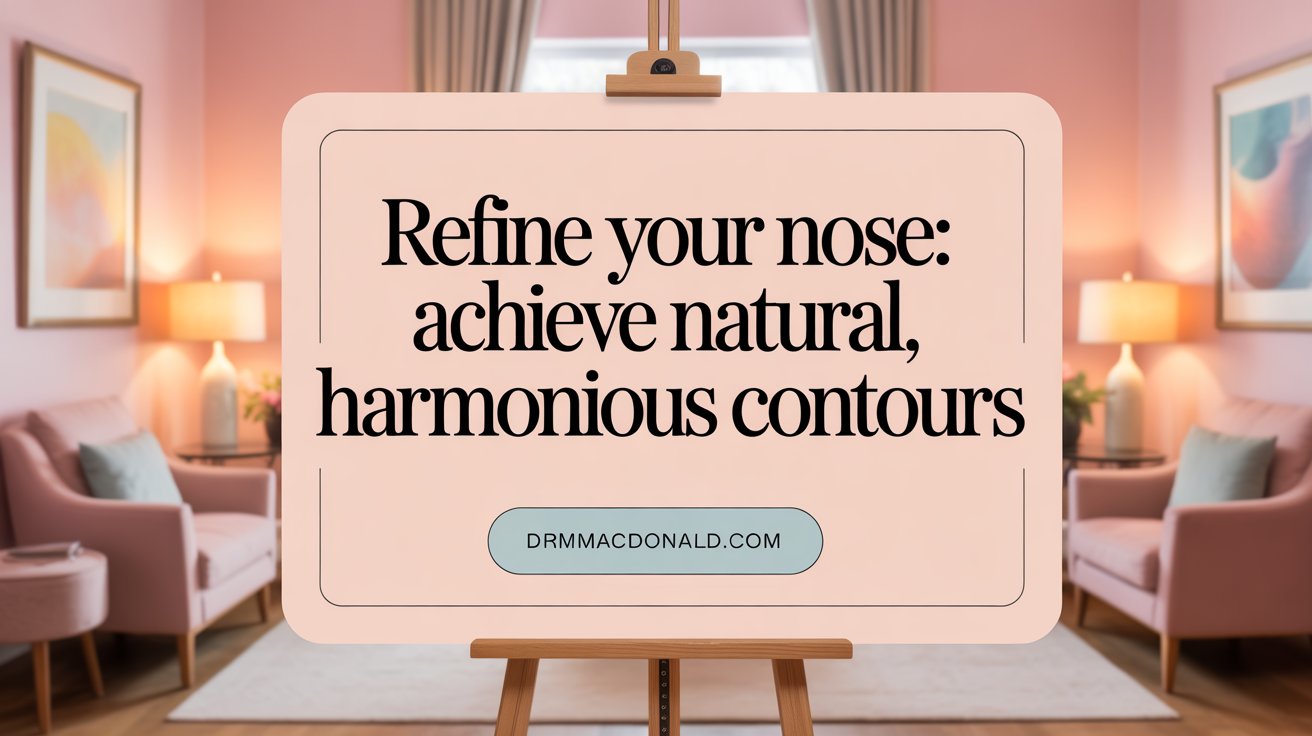 Bulbous tip rhinoplasty involves reshaping the lower part of the nose to create a more refined and natural contour. Surgeons typically reshape or reduce excessively thick or rounded nasal tip cartilage, improving definition. This procedure enhances the overall harmony of the nose, resulting in a more balanced facial appearance and improved nasal definition.
Bulbous tip rhinoplasty involves reshaping the lower part of the nose to create a more refined and natural contour. Surgeons typically reshape or reduce excessively thick or rounded nasal tip cartilage, improving definition. This procedure enhances the overall harmony of the nose, resulting in a more balanced facial appearance and improved nasal definition.
2. Wide Nose Narrowing Using Lateral Nasal Osteotomy
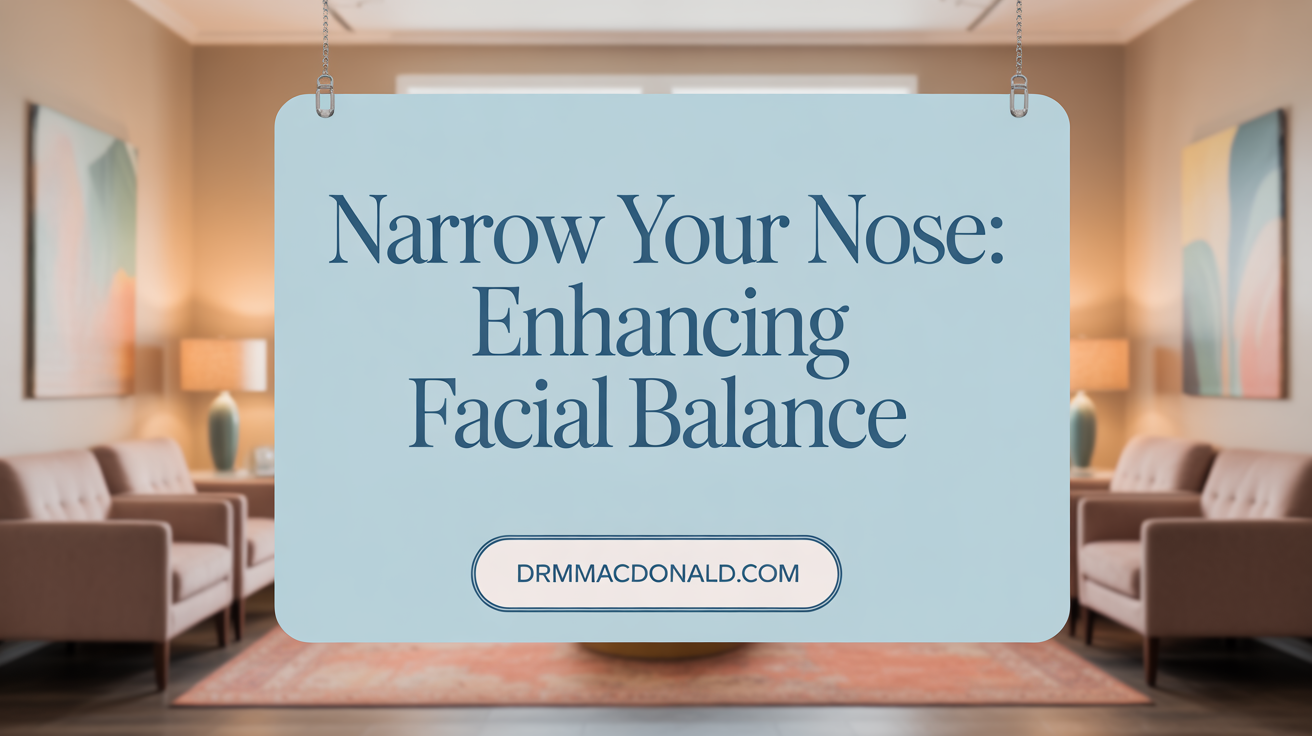 Rhinoplasty offers effective solutions for those with a wide nose. One of the primary techniques used is lateral nasal osteotomy, which involves carefully splitting the nasal bones to reduce their width.
Rhinoplasty offers effective solutions for those with a wide nose. One of the primary techniques used is lateral nasal osteotomy, which involves carefully splitting the nasal bones to reduce their width.
This procedure especially targets the nasal dorsum, helping to create a narrower, more proportionate appearance. By precisely repositioning the nasal bones, surgeons can significantly improve facial harmony without compromising nasal function.
Patients often see a more balanced profile and natural results after this procedure, with long-lasting effects confirmed through long-term follow-up and before-and-after photos.
3. Button Nose Reshaping to Create Balanced Facial Harmony
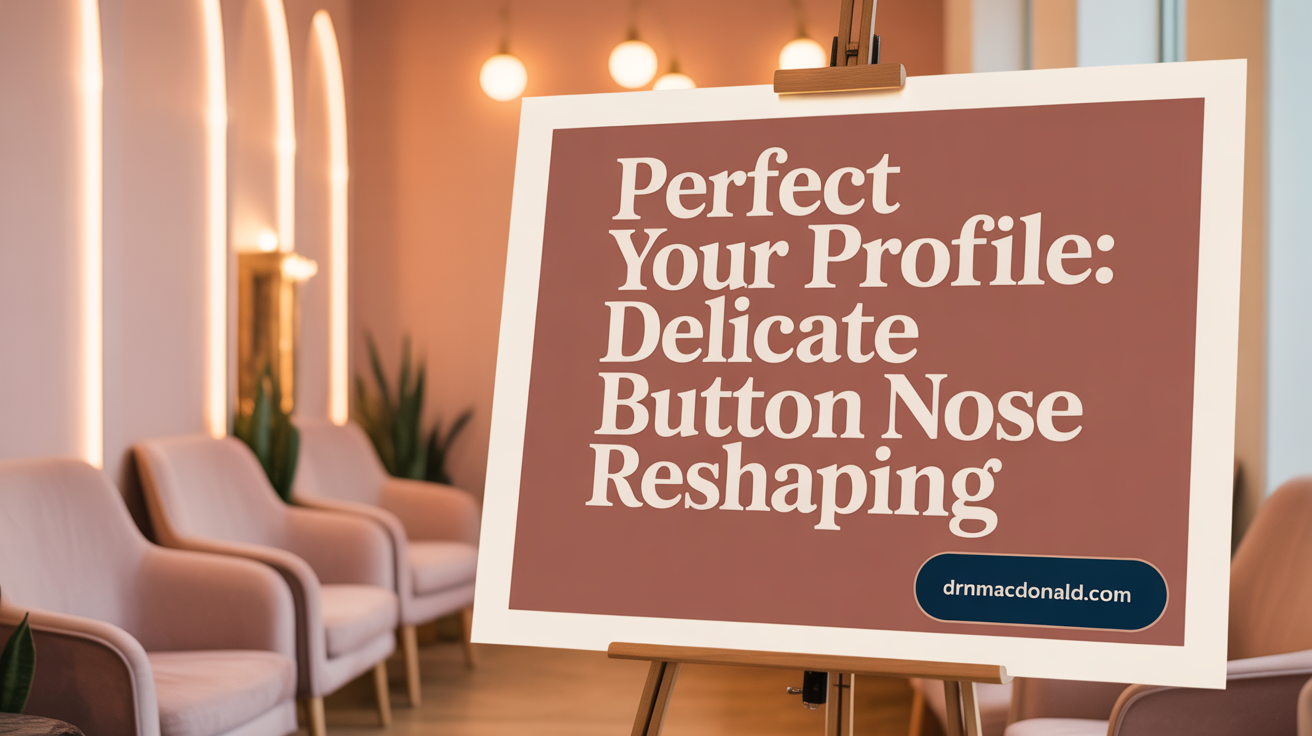 Button nose rhinoplasty focuses on refining the nasal tip to achieve a more delicate, proportionate appearance. This procedure often involves tip refinement techniques to soften the nose’s overall shape.
Button nose rhinoplasty focuses on refining the nasal tip to achieve a more delicate, proportionate appearance. This procedure often involves tip refinement techniques to soften the nose’s overall shape.
By adjusting the size and contour of the nasal tip, surgeons can help create a harmonious balance that complements other facial features.
The goal is to produce a natural look, enhancing facial symmetry and confidence. Results of button nose rhinoplasty are typically long-lasting, with many patients experiencing a transformation that maintains its beauty over years.
4. Correction of Dorsal Hump for a Smoother Nasal Profile
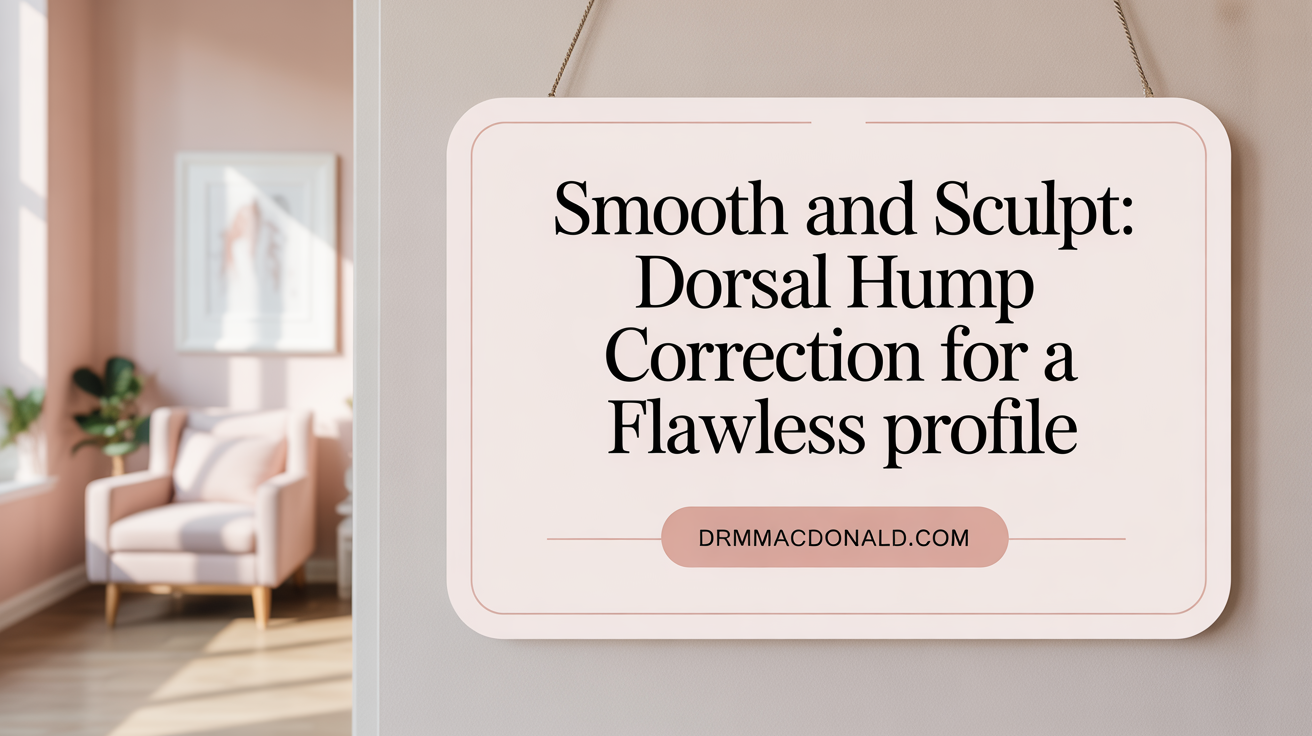 Many patients seek rhinoplasty to address a dorsal hump, which is a bump on the bridge of the nose that disrupts a smooth profile. Surgical options like hump reduction carefully remove or reduce this bump, leading to a more harmonious and natural look.
Many patients seek rhinoplasty to address a dorsal hump, which is a bump on the bridge of the nose that disrupts a smooth profile. Surgical options like hump reduction carefully remove or reduce this bump, leading to a more harmonious and natural look.
Profile smoothing not only enhances facial balance but can also boost self-confidence. Patients often report feeling more comfortable and satisfied with their appearance after achieving an evenly contoured nasal bridge.
The results are typically long-lasting, with photos showcasing significant improvements in nose shape months or even years after surgery. These aesthetic enhancements often translate into a renewed sense of confidence and improved overall facial harmony.
5. Nostril Reduction via Alar Base Resection for Symmetry
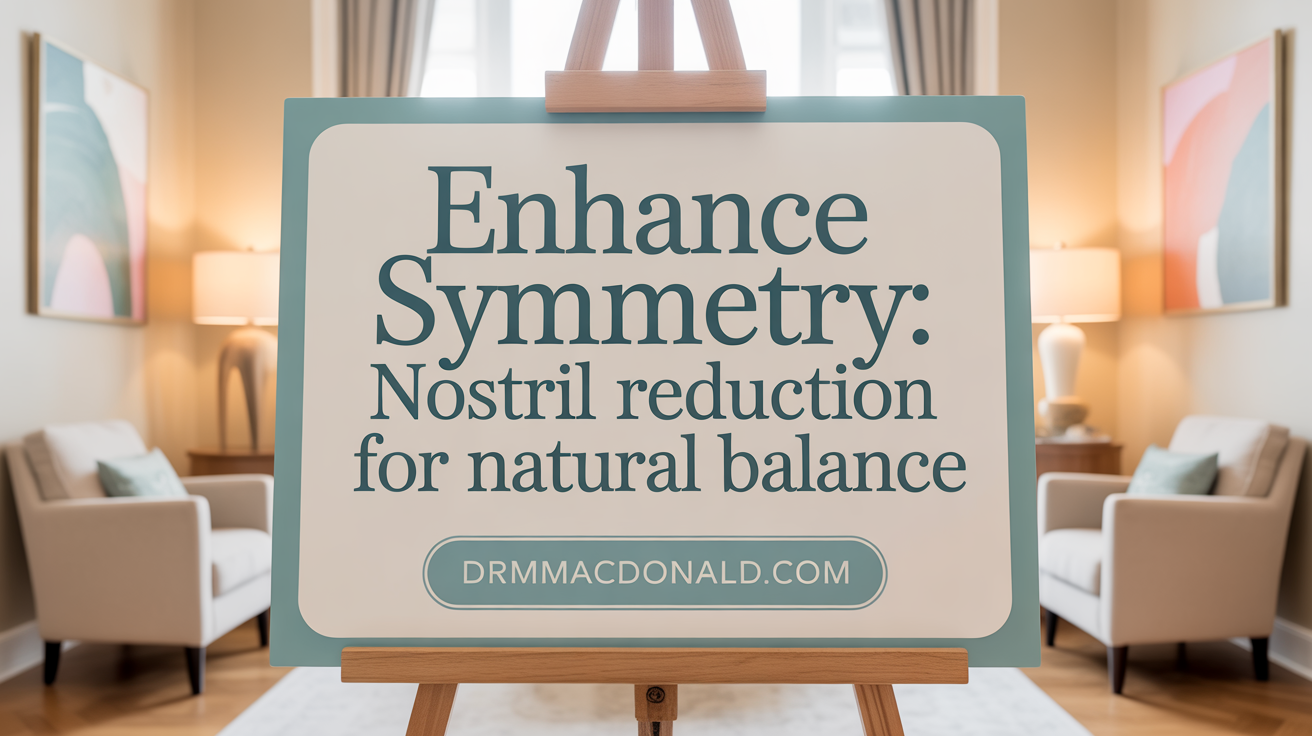 Nostril reduction through alar base resection is a commonly performed technique to improve nasal symmetry and harmony. It involves carefully removing tissue at the nostril base to decrease flare and balance the overall nose shape. This procedure enhances facial aesthetics by creating more proportional nostrils that match the rest of the nose and face, leading to more natural and symmetrical results.
Nostril reduction through alar base resection is a commonly performed technique to improve nasal symmetry and harmony. It involves carefully removing tissue at the nostril base to decrease flare and balance the overall nose shape. This procedure enhances facial aesthetics by creating more proportional nostrils that match the rest of the nose and face, leading to more natural and symmetrical results.
6. Ethnic Rhinoplasty Preserving Unique Facial Features
 Ethnic rhinoplasty employs specialized techniques to refine nasal shape while respecting and maintaining individual cultural identity. Surgeons often customize procedures such as cartilage reshaping and nostril reduction to suit diverse facial features.
Ethnic rhinoplasty employs specialized techniques to refine nasal shape while respecting and maintaining individual cultural identity. Surgeons often customize procedures such as cartilage reshaping and nostril reduction to suit diverse facial features.
Skin thickness plays an essential role. Thicker skin typical in some ethnicities requires careful modification to avoid a bulky appearance, ensuring the nose looks natural.
The goal is to achieve results that enhance facial harmony without erasing ethnic characteristics. Patients can expect refined but authentic-looking noses that complement their overall facial features.
7. Revision Rhinoplasty Fixing Unsatisfactory Prior Surgery
 Revision rhinoplasty is often necessary when previous nasal surgeries yield unsatisfactory results or introduce structural issues. Many patients seek this procedure to correct crooked noses, maintain or restore facial harmony, and improve nasal function.
Revision rhinoplasty is often necessary when previous nasal surgeries yield unsatisfactory results or introduce structural issues. Many patients seek this procedure to correct crooked noses, maintain or restore facial harmony, and improve nasal function.
These cases involve complex techniques aimed at restoring nasal support, such as using cartilage grafts and structural reinforcements. For example, surgeons may perform septal reconstruction or add rib grafts to rebuild the nose's foundation and prevent future deformities.
In addition to aesthetic improvements—like correcting dorsal humps, refining the tip, or reducing nostril size—revision surgeries can significantly enhance nasal breathing. Functional issues such as septal deviation and airway obstruction are commonly addressed alongside structural repairs.
Patients who undergo revision rhinoplasty often report long-term satisfaction, especially when performed by experienced surgeons using reputable techniques. Detailed success stories and visual results highlight the effectiveness of these interventions, demonstrating restored nasal form and function over time.
8. Open Rhinoplasty for Complex Nasal Tip Deformities
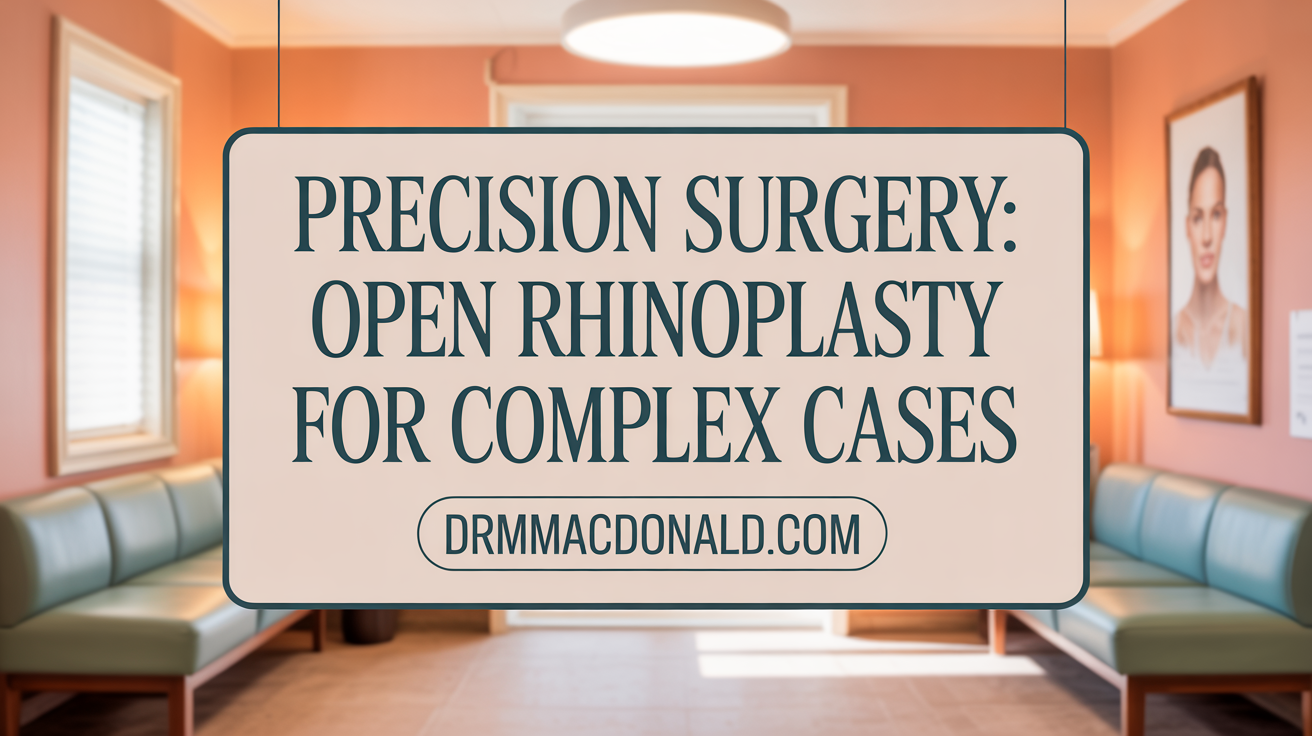
Open rhinoplasty technique
Open rhinoplasty involves making a small incision across the columella, allowing surgeons direct access to the nasal structures. This approach gives precise control for complex cases, especially when significant reshaping of the nasal tip is needed.
Tip cartilage remodeling
During the procedure, careful work is done to reshape and support the tip cartilage. Surgeons can modify cartilage to refine the tip, improve symmetry, and support natural projection, ensuring a balanced and natural appearance.
Long-term aesthetic results
Modern techniques focus on preserving structural support to maintain results over time. Follow-up images often show long-lasting improvements, with patients enjoying natural, harmonious noses that age well, sometimes over many years.
9. Septal Reconstruction Enhancing Breathing and Form
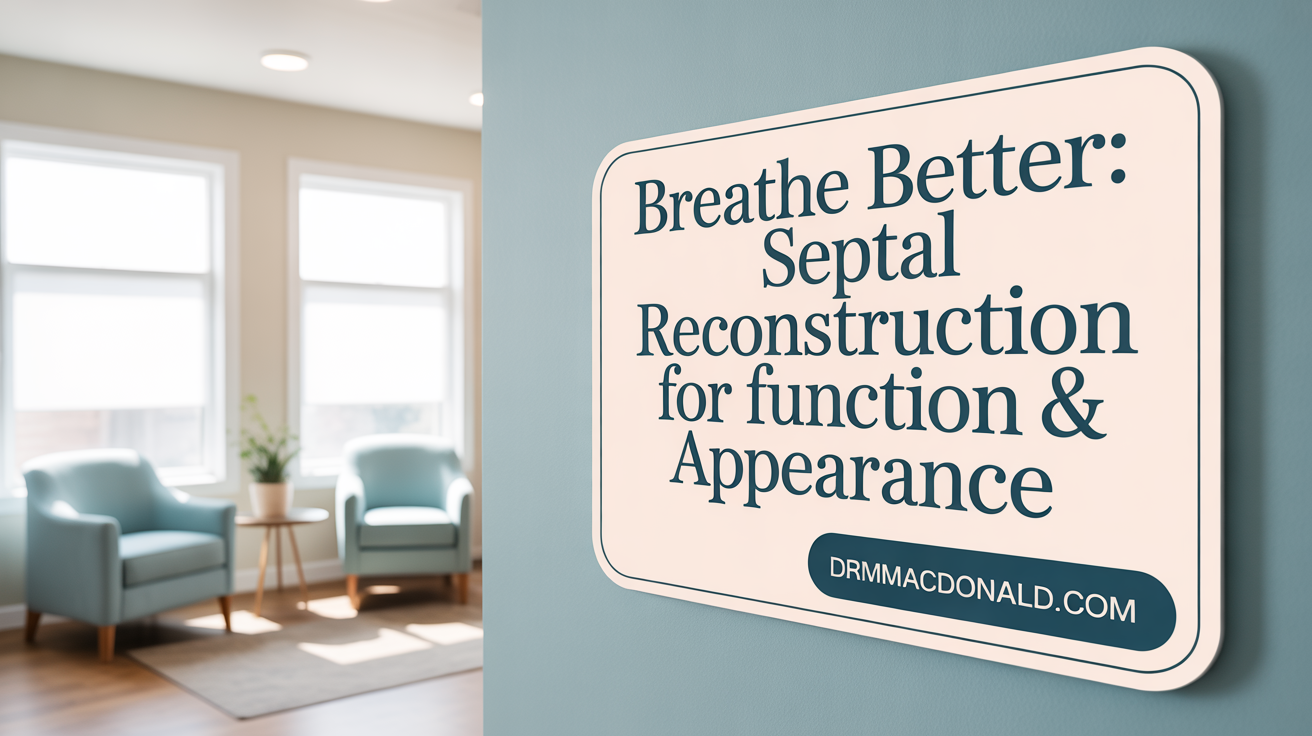
What is septal reconstruction?
Septal reconstruction is a surgical technique used during rhinoplasty to repair or straighten the nasal septum, which is the cartilage and bone dividing the nasal cavity.
How does it improve airway function?
This procedure often addresses breathing issues caused by a deviated septum, helping to clear nasal passages and improve airflow. Many patients experience easier breathing and relief from nasal congestion post-surgery.
Why is nasal structure stability important?
Reinforcing the nasal structure through septal reconstruction ensures long-term stability of the nose. This strengthens the overall framework, which can prevent deformities such as collapse or asymmetry as the face ages.
Additional benefits and considerations
In addition to functional improvements, septal reconstruction can enhance the aesthetic appearance of the nose by creating a more harmonious and balanced profile. It's especially beneficial for patients with previously compromised nasal structure due to trauma or previous surgeries.
10. Tertiary Rhinoplasty with Rib Grafts for Severe Deformities
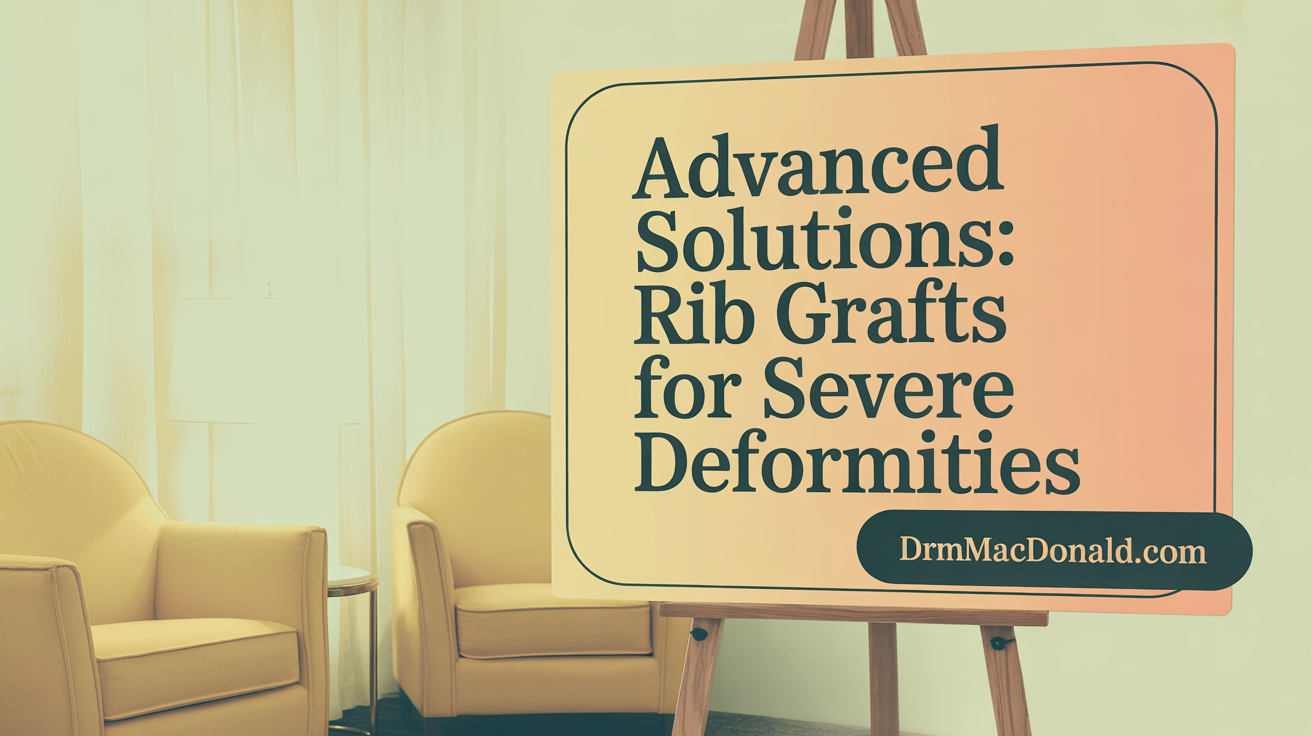 Tertiary rhinoplasty, often necessary for severe deformities, can involve complex procedures like MTF rib grafts. These grafts help restore nasal contour and support, improving both appearance and breathing function. Success in these cases leads to long-term, natural results, with patients experiencing a significant improvement in facial harmony and nasal support.
Tertiary rhinoplasty, often necessary for severe deformities, can involve complex procedures like MTF rib grafts. These grafts help restore nasal contour and support, improving both appearance and breathing function. Success in these cases leads to long-term, natural results, with patients experiencing a significant improvement in facial harmony and nasal support.
11. Non-Surgical Liquid Rhinoplasty for Temporary Nose Refinement
 Non-surgical rhinoplasty uses dermal fillers like Restylane to quickly enhance nose shape without surgery. This technique effectively corrects the dorsal hump and refines the nasal dorsum temporarily. It is a popular choice for patients seeking immediate, subtle improvements, especially as a preliminary step before surgical procedures. Results typically last several months, offering a non-invasive alternative for those not ready for surgery.
Non-surgical rhinoplasty uses dermal fillers like Restylane to quickly enhance nose shape without surgery. This technique effectively corrects the dorsal hump and refines the nasal dorsum temporarily. It is a popular choice for patients seeking immediate, subtle improvements, especially as a preliminary step before surgical procedures. Results typically last several months, offering a non-invasive alternative for those not ready for surgery.
12. Young Adult Rhinoplasty Showcasing Skin Tightening and Nasal Refinement
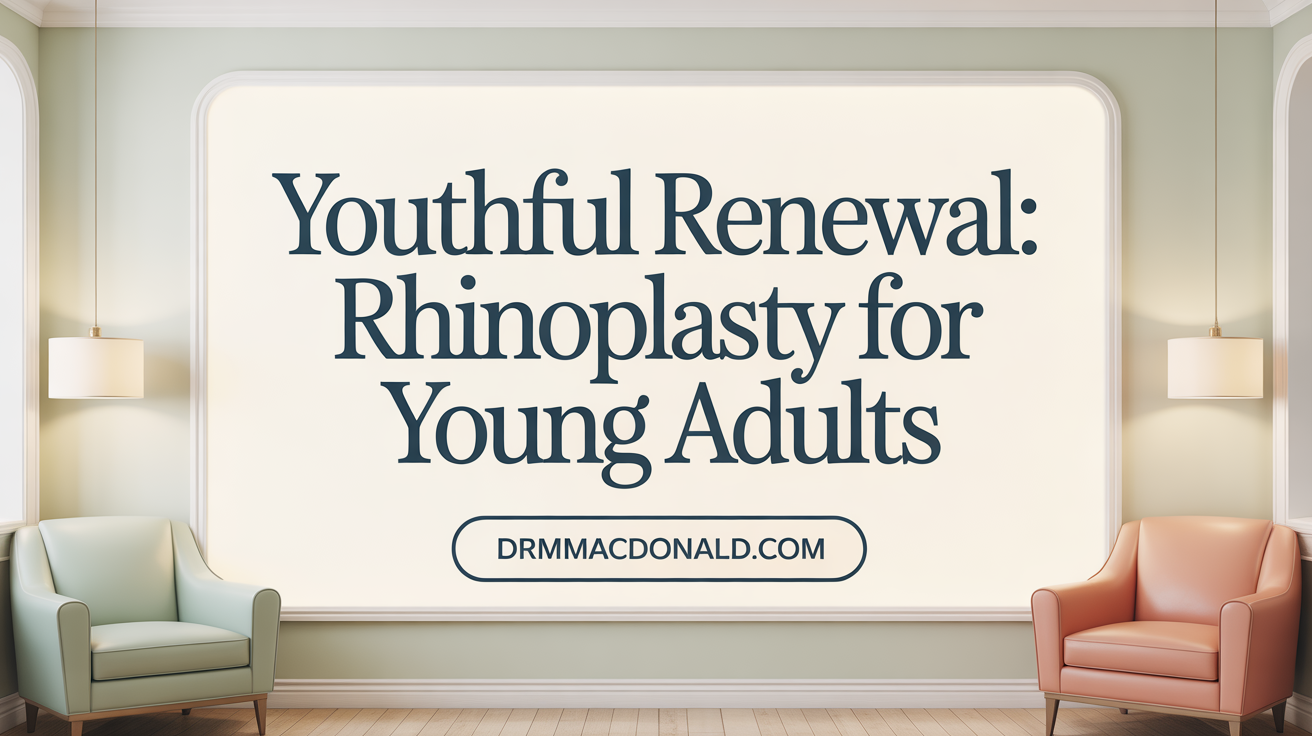 Rhinoplasty outcomes in young adults often feature substantial skin tightening and refined nasal shapes. These procedures aim to create balanced, natural-looking results that enhance facial harmony. Most young patients experience significant improvements in nasal contours, including the reduction of dorsal humps and tip refinement, with skin tightening contributing to a more youthful appearance. The results, typically lasting for years, emphasize personalized techniques that respect ethnic features and facial proportions.
Rhinoplasty outcomes in young adults often feature substantial skin tightening and refined nasal shapes. These procedures aim to create balanced, natural-looking results that enhance facial harmony. Most young patients experience significant improvements in nasal contours, including the reduction of dorsal humps and tip refinement, with skin tightening contributing to a more youthful appearance. The results, typically lasting for years, emphasize personalized techniques that respect ethnic features and facial proportions.
13. Rhinoplasty in Patients Under 19: Safe Procedures and Natural Results
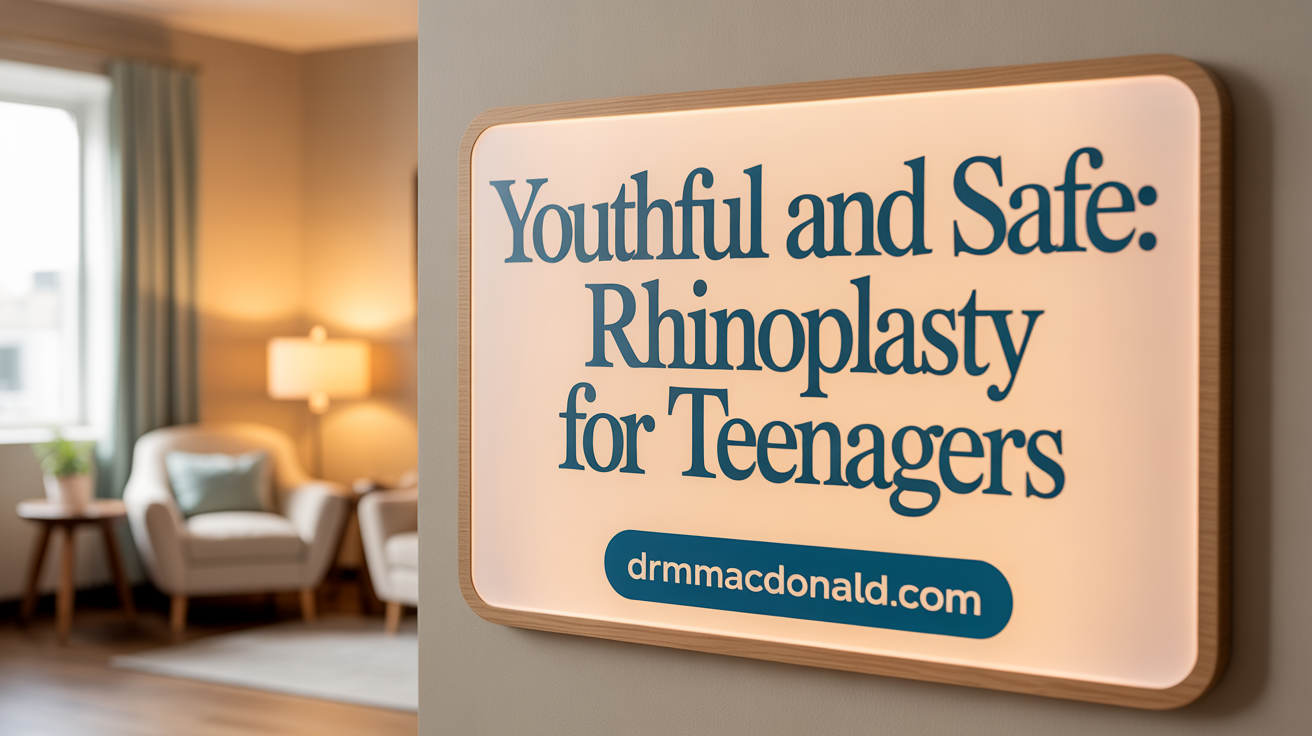
Teenage rhinoplasty
Many young patients, particularly teenagers over the age of 13 for girls and 16 for boys, seek rhinoplasty to improve their nasal appearance or address functional issues like breathing difficulties.
Post-puberty surgery timing
Surgeons generally recommend waiting until after puberty when facial growth is complete to ensure long-lasting and stable results. This typically means surgery is safest after age 18.
Subtle youthful improvements
In younger patients, surgeons often focus on refined, natural changes that enhance facial harmony without over-altering features. Results at this age tend to be more significant, especially regarding skin tightening and structural support.
Additional insights
Age factors influence rhinoplasty outcomes, with younger patients experiencing more dramatic changes, while older individuals often opt for subtle adjustments. Overall, with skilled surgical techniques, young patients can achieve natural, functional, and aesthetic improvements that last for years.
14. Mid-Age Rhinoplasty Focusing on Subtle, Natural Enhancement
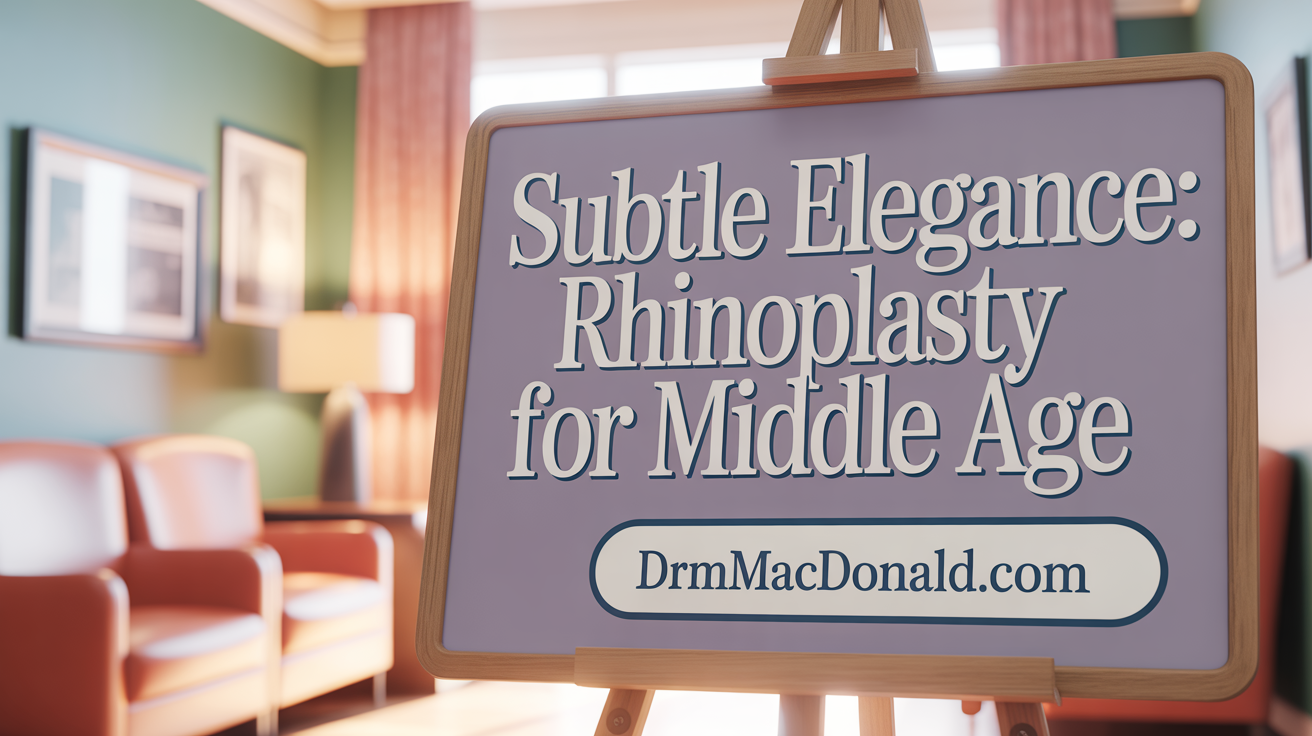 Rhinoplasty performed in the 40s and 50s often aims for subtle, natural-looking improvements that complement aging facial features. Many patients in this age group seek to refine their nose gently, addressing issues like drooping tips or bulbous noses, without drastic changes.
Rhinoplasty performed in the 40s and 50s often aims for subtle, natural-looking improvements that complement aging facial features. Many patients in this age group seek to refine their nose gently, addressing issues like drooping tips or bulbous noses, without drastic changes.
This approach prioritizes maintaining the individual's ethnic features and facial harmony, ensuring results look seamless and authentic. Skilled surgeons customize the procedure to enhance natural contours, often using techniques such as tip refinement or minor dorsal reshaping.
As age-related changes can make dramatic alterations difficult, middle-aged patients typically prefer subtle modifications that improve balance and confidence. The focus remains on preserving the nose’s structural integrity and facial identity.
Overall, rhinoplasty in this demographic emphasizes gentle correction and the longevity of results, with careful attention to the aging process and maintaining ethnic characteristics.
15. Older Patient Rhinoplasty Lifting Drooping Nasal Tips
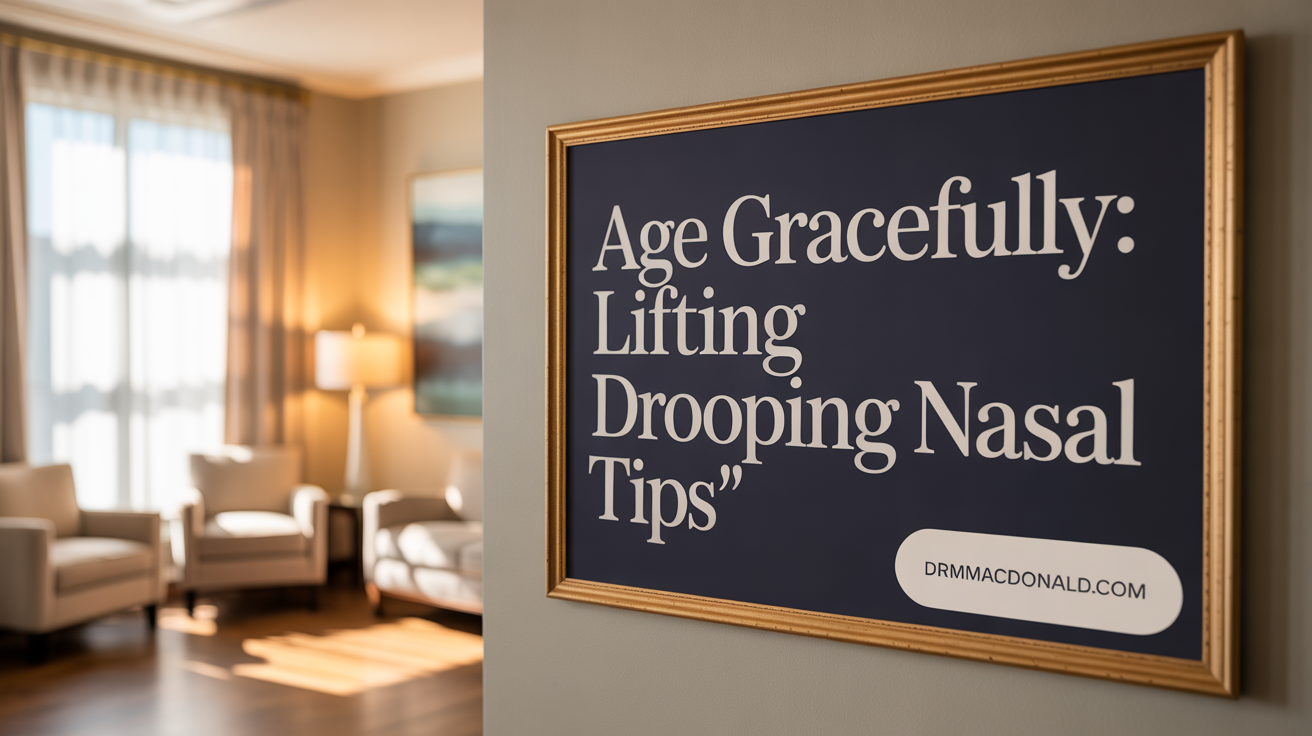 As people age, changes in nasal structure such as drooping or a bulbous tip become more common. For older adults, rhinoplasty often involves subtle lift procedures to restore a more youthful, balanced appearance. These surgeries can also improve nasal function by addressing breathing issues caused by tissue weakening. Dr. Sedgh, a specialist in both aesthetic and functional rhinoplasty, focuses on customizing procedures to achieve natural, long-lasting results that complement the patient’s facial harmony and age-related changes.
As people age, changes in nasal structure such as drooping or a bulbous tip become more common. For older adults, rhinoplasty often involves subtle lift procedures to restore a more youthful, balanced appearance. These surgeries can also improve nasal function by addressing breathing issues caused by tissue weakening. Dr. Sedgh, a specialist in both aesthetic and functional rhinoplasty, focuses on customizing procedures to achieve natural, long-lasting results that complement the patient’s facial harmony and age-related changes.
16. Correction of Nasal Deviation with Functional and Cosmetic Benefits
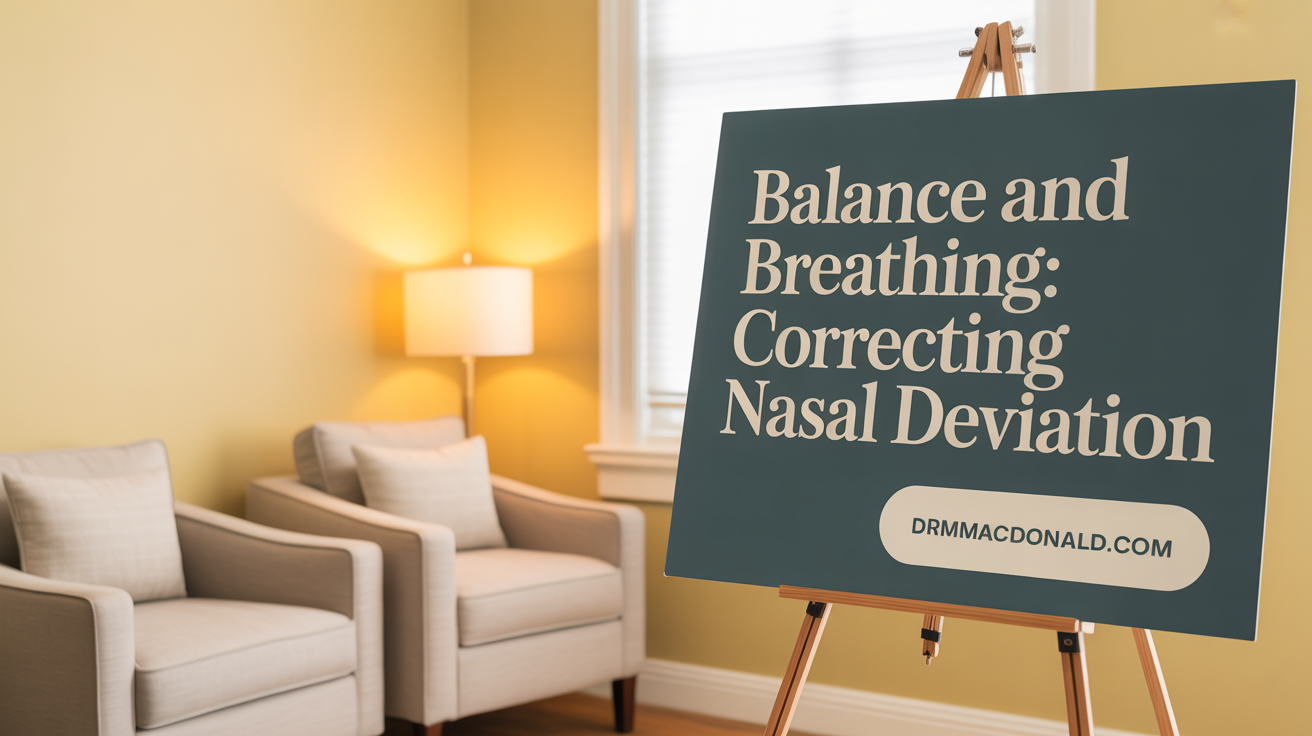 Many patients seek rhinoplasty to correct a crooked nose, which can impact facial harmony and cause breathing issues. Surgeons often combine cosmetic correction with septoplasty, a procedure that repairs the nasal septum to improve airflow. This integrated approach not only enhances the nose’s appearance but also restores proper nasal function. Before and after photos of deviated nose rhinoplasty highlight significant improvements in symmetry and breathing, demonstrating the dual benefits of the surgery.
Many patients seek rhinoplasty to correct a crooked nose, which can impact facial harmony and cause breathing issues. Surgeons often combine cosmetic correction with septoplasty, a procedure that repairs the nasal septum to improve airflow. This integrated approach not only enhances the nose’s appearance but also restores proper nasal function. Before and after photos of deviated nose rhinoplasty highlight significant improvements in symmetry and breathing, demonstrating the dual benefits of the surgery.
17. Refinement of Bulbous Nasal Tips in Diverse Patient Profiles
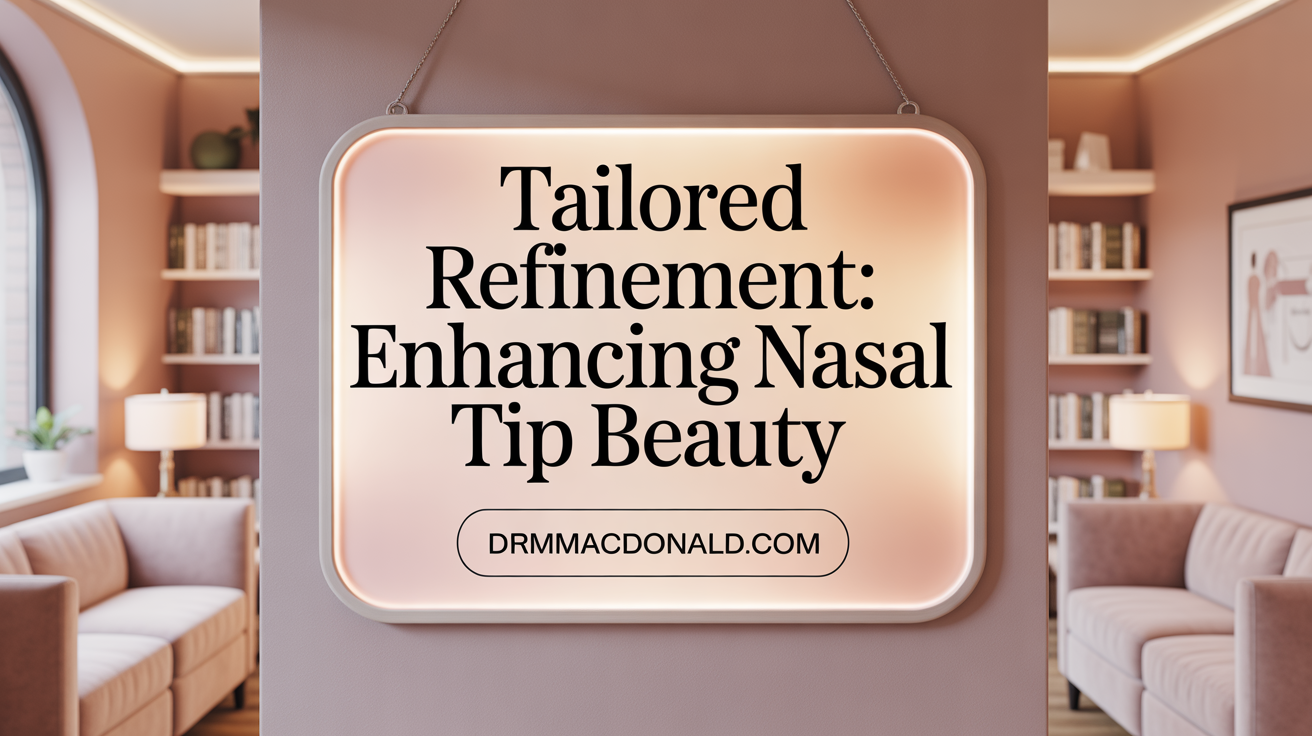 Rhinoplasty procedures often focus on refining bulbous nasal tips, which can affect facial harmony and patient confidence. Surgeons reshape the cartilage to create a more refined, tapered tip, enhancing overall nasal aesthetics.
Rhinoplasty procedures often focus on refining bulbous nasal tips, which can affect facial harmony and patient confidence. Surgeons reshape the cartilage to create a more refined, tapered tip, enhancing overall nasal aesthetics.
The techniques used include precise cartilage trimming, grafting, and structural support to avoid future deformities. Tailoring these adjustments for each individual ensures natural results.
Considering patient diversity, gender and ethnicity play a vital role. For example, ethnic rhinoplasty preserves unique features while refining the nasal tip. In males, a slightly more defined and strong tip may be desired, whereas females often prefer a softer, more delicate tip.
Successful bulbous tip correction results in a balanced, harmonious look that complements facial features. Over time, these transformations tend to be stable, especially when structural support is reinforced during surgery.
18. Patient Transformation Combining Rhinoplasty with Chin Augmentation for Facial Harmony
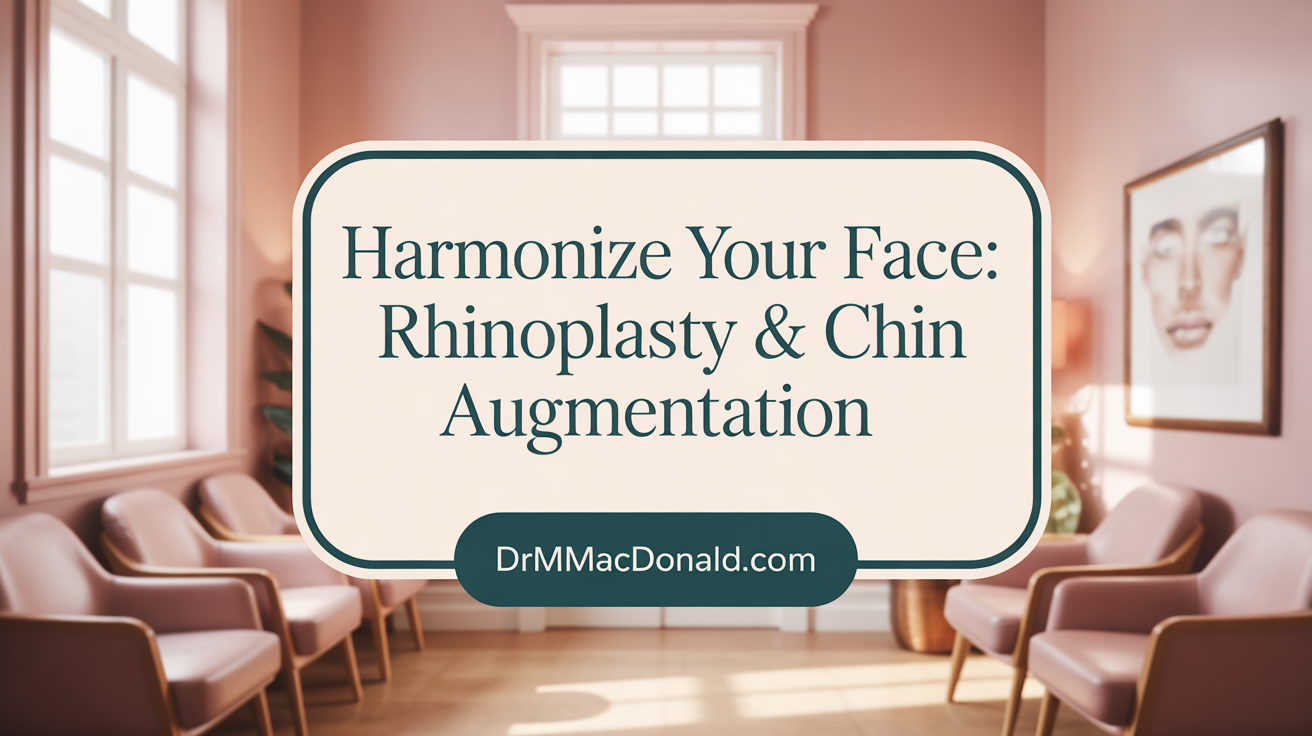 Many patients seek to enhance facial balance by combining rhinoplasty with chin augmentation. This approach improves overall proportionality, creating a more harmonious appearance.
Many patients seek to enhance facial balance by combining rhinoplasty with chin augmentation. This approach improves overall proportionality, creating a more harmonious appearance.
Adding a chin implant alongside rhinoplasty can significantly refine the jawline and support facial symmetry. This combination often results in a natural look that complements individual features.
Electing for both procedures at once not only optimizes aesthetic outcomes but also reduces recovery time. Patients report heightened confidence thanks to more balanced facial proportions.
19. High-Definition Rhinoplasty Techniques for Natural-Looking Results
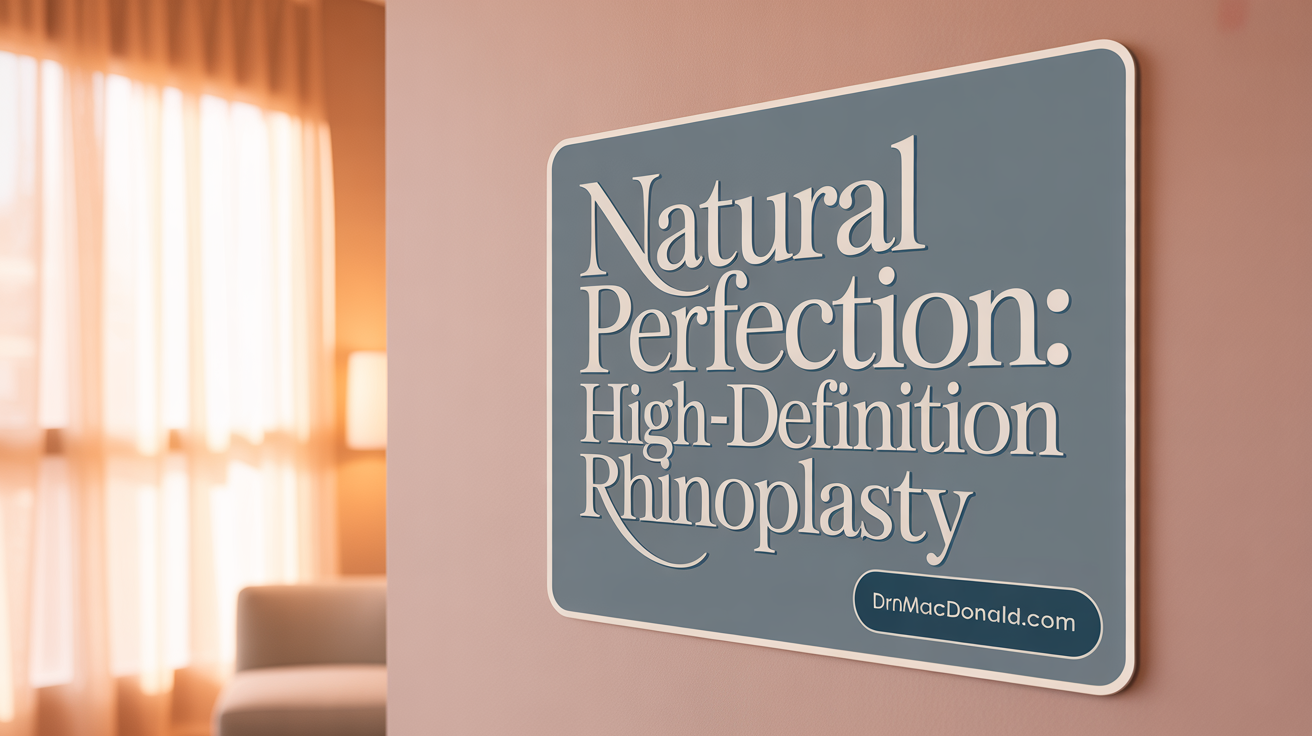
What is Finesse Rhinoplasty?
Finesse rhinoplasty focuses on delicate, precise modifications to enhance nasal appearance while maintaining natural facial harmony. It involves techniques that refine the nose’s shape subtly, avoiding drastic changes.
How does tip support enhancement improve outcomes?
Strengthening the nasal tip is crucial for long-lasting, natural results. Surgeons often use cartilage grafting or structural support to prevent drooping and ensure the tip remains well-defined over time.
How to avoid an unnatural look?
Experienced surgeons tailor procedures to each face, preserving ethnic features and avoiding over-reduction. They emphasize balanced proportions and careful technique to produce results that appear natural and harmonious.
Visual evidence of success
The website offers numerous before and after photos, illustrating the transformative yet natural appearance achieved through finesse rhinoplasty. These images serve as proof of the meticulous techniques used for subtle, yet impactful improvements.
20. Rhinoplasty with Turbinate Procedures for Enhanced Breathing
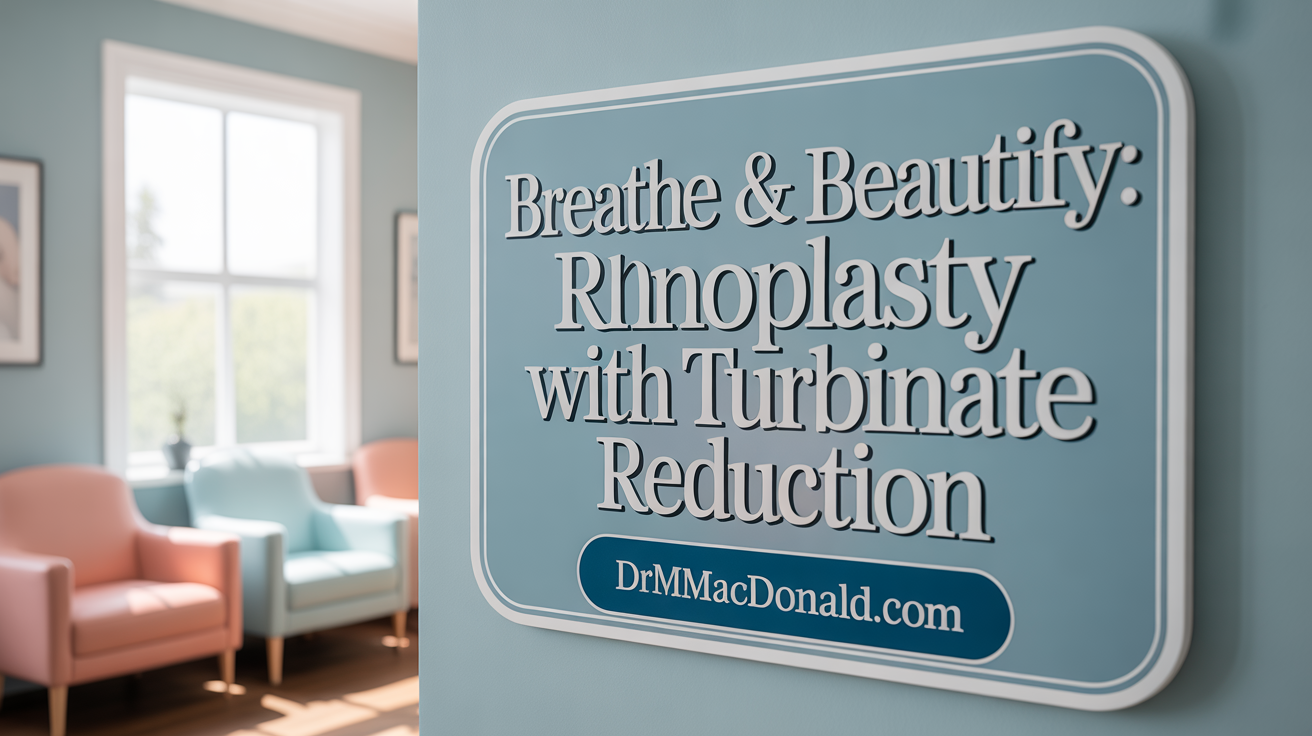 Rhinoplasty often combines aesthetic improvements with functional procedures like turbinate reduction to boost nasal airflow. This approach addresses breathing issues caused by enlarged turbinates or nasal obstructions. By reducing turbinate size, patients experience better airflow, decreased congestion, and improved overall nasal function. These combined surgeries are tailored to individual needs, ensuring both a natural appearance and enhanced nasal performance.
Rhinoplasty often combines aesthetic improvements with functional procedures like turbinate reduction to boost nasal airflow. This approach addresses breathing issues caused by enlarged turbinates or nasal obstructions. By reducing turbinate size, patients experience better airflow, decreased congestion, and improved overall nasal function. These combined surgeries are tailored to individual needs, ensuring both a natural appearance and enhanced nasal performance.
21. Successful Alar Base Resection To Correct Wide Nostril Flare
 Alar base resection is a surgical technique used to narrow wide nostrils, creating a more balanced and natural nasal appearance. This procedure is especially effective for patients with prominent nostril flare that disrupt facial harmony. By carefully reducing the alar base, surgeons can achieve a more refined and proportional nasal base that complements the overall facial features. The results are often noticeable immediately after surgery, with long-term stability seen in follow-up images. When combined with other rhinoplasty techniques, alar base resection helps ensure a natural, harmonious look that boosts self-confidence.
Alar base resection is a surgical technique used to narrow wide nostrils, creating a more balanced and natural nasal appearance. This procedure is especially effective for patients with prominent nostril flare that disrupt facial harmony. By carefully reducing the alar base, surgeons can achieve a more refined and proportional nasal base that complements the overall facial features. The results are often noticeable immediately after surgery, with long-term stability seen in follow-up images. When combined with other rhinoplasty techniques, alar base resection helps ensure a natural, harmonious look that boosts self-confidence.
22. Long-Term Follow-Up Case Showing Durable Natural Results at Over Three Years
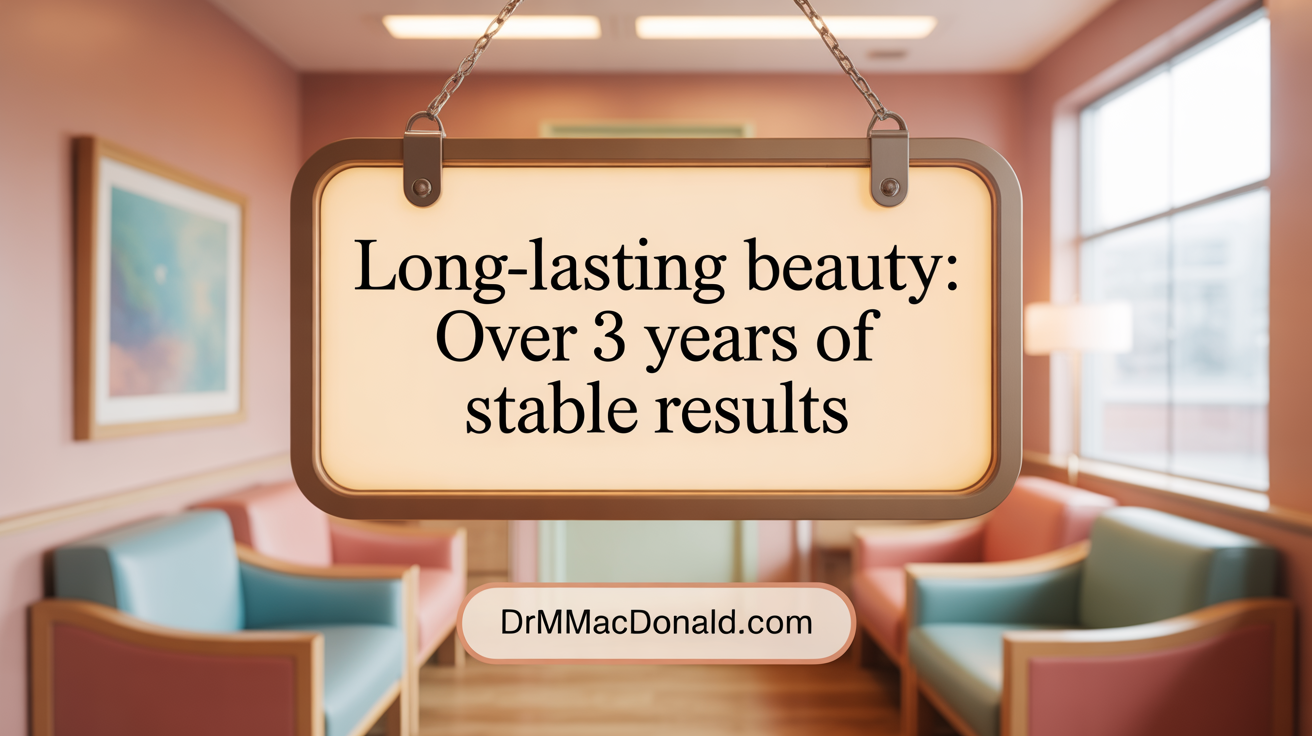 Long-term rhinoplasty results can remain stable and natural-looking for years after surgery. Follow-up cases over three years demonstrate that well-executed procedures with proper technique retain their shape and harmony over time. These outcomes reflect durable structural support, especially when modern methods are used to reinforce the nose's framework. Natural aging effects, such as skin thinning or cartilage changes, may subtly influence appearance, but overall, many patients enjoy lasting, balanced results that adapt gently with age.
Long-term rhinoplasty results can remain stable and natural-looking for years after surgery. Follow-up cases over three years demonstrate that well-executed procedures with proper technique retain their shape and harmony over time. These outcomes reflect durable structural support, especially when modern methods are used to reinforce the nose's framework. Natural aging effects, such as skin thinning or cartilage changes, may subtly influence appearance, but overall, many patients enjoy lasting, balanced results that adapt gently with age.
23. Correcting Dorsal Deformities and Asymmetries for Balanced Profiles
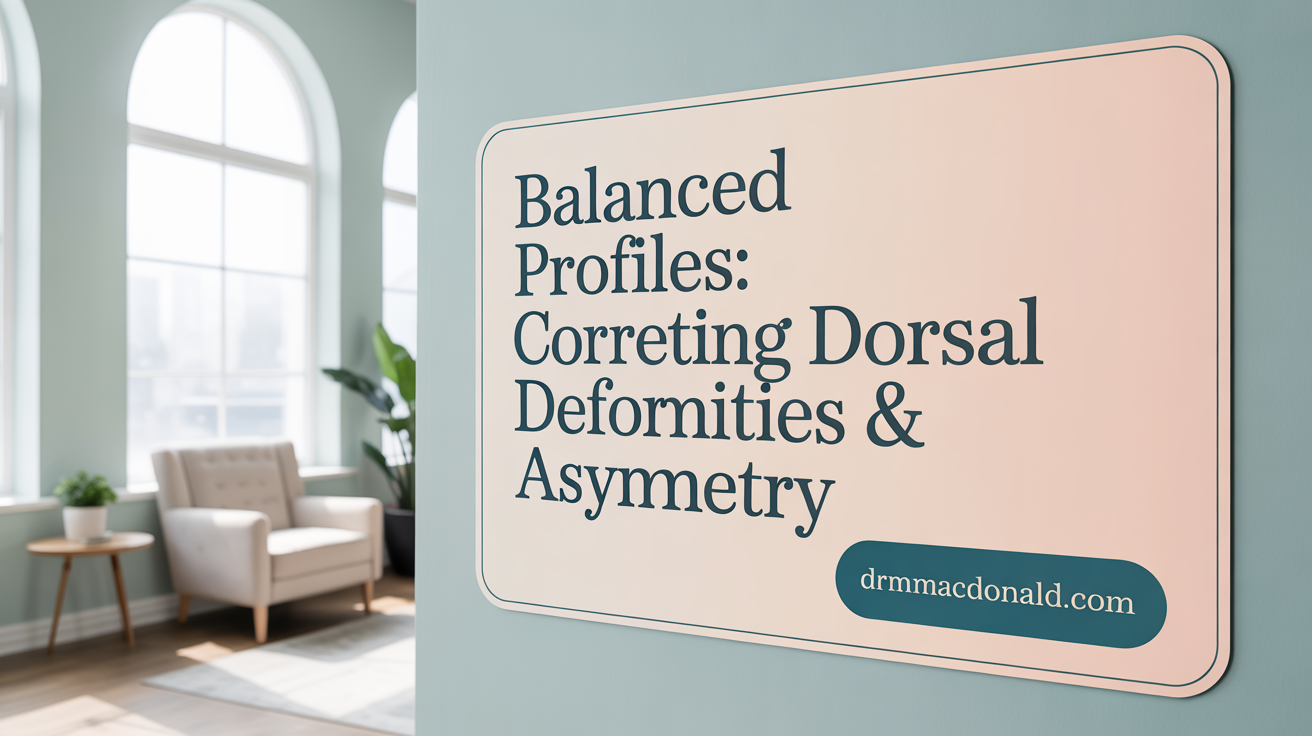 Rhinoplasty techniques excel at correcting dorsal humps and straightening the nasal bridge, leading to a smoother, more natural profile. Surgeons also address nasal asymmetry to enhance overall facial harmony. These refinements contribute to a balanced facial appearance, boosting self-confidence and aesthetic appeal.
Rhinoplasty techniques excel at correcting dorsal humps and straightening the nasal bridge, leading to a smoother, more natural profile. Surgeons also address nasal asymmetry to enhance overall facial harmony. These refinements contribute to a balanced facial appearance, boosting self-confidence and aesthetic appeal.
24. Secondary Rhinoplasty After Dog Bite Injuries Showing Restored Appearance
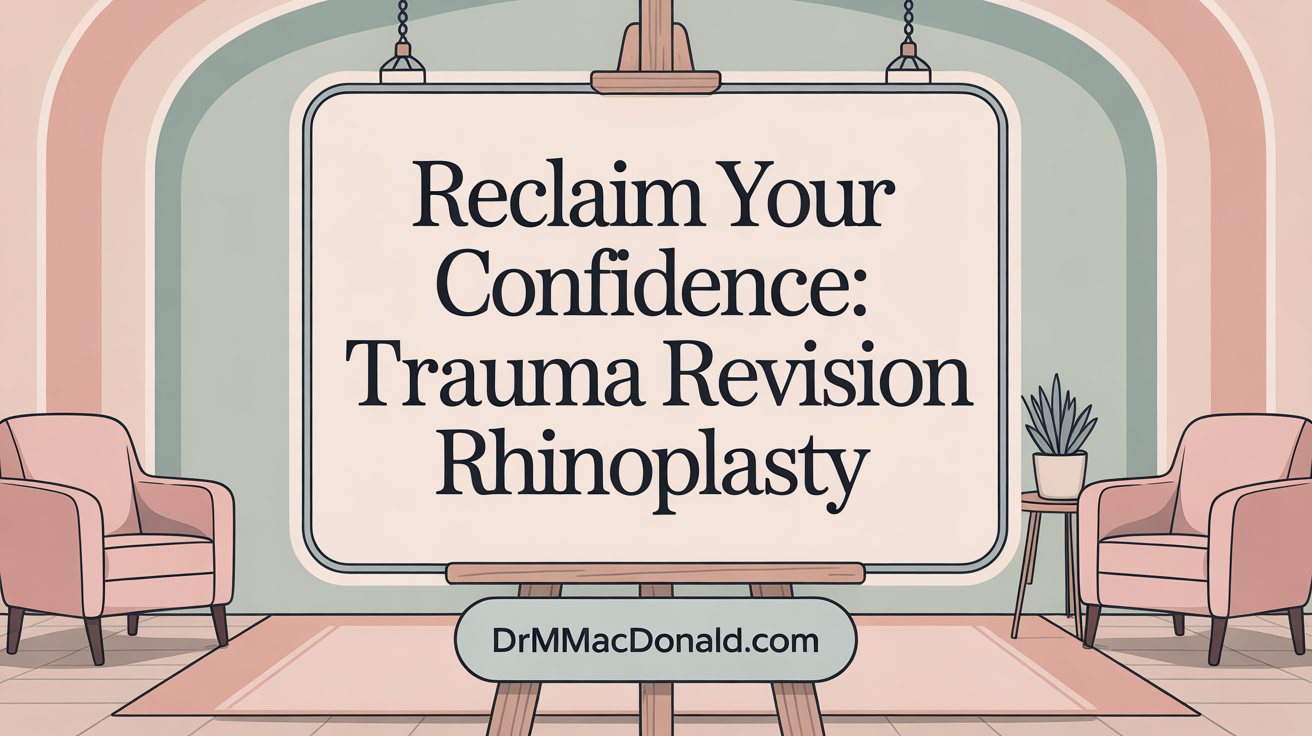 Trauma reconstruction, such as secondary rhinoplasty, plays a vital role in restoring nose shape and function after injuries like dog bites. These complex cases often require revision surgeries to rebuild nasal structure, improve appearance, and ensure better breathing. Patients typically experience notable improvements in self-confidence as their facial harmony is recovered. Such procedures highlight the importance of specialized techniques and experienced surgeons to achieve natural, durable results long after initial trauma.
Trauma reconstruction, such as secondary rhinoplasty, plays a vital role in restoring nose shape and function after injuries like dog bites. These complex cases often require revision surgeries to rebuild nasal structure, improve appearance, and ensure better breathing. Patients typically experience notable improvements in self-confidence as their facial harmony is recovered. Such procedures highlight the importance of specialized techniques and experienced surgeons to achieve natural, durable results long after initial trauma.
25. Patient Case Demonstrating Rhinoplasty With Septal Repair to Improve Airway
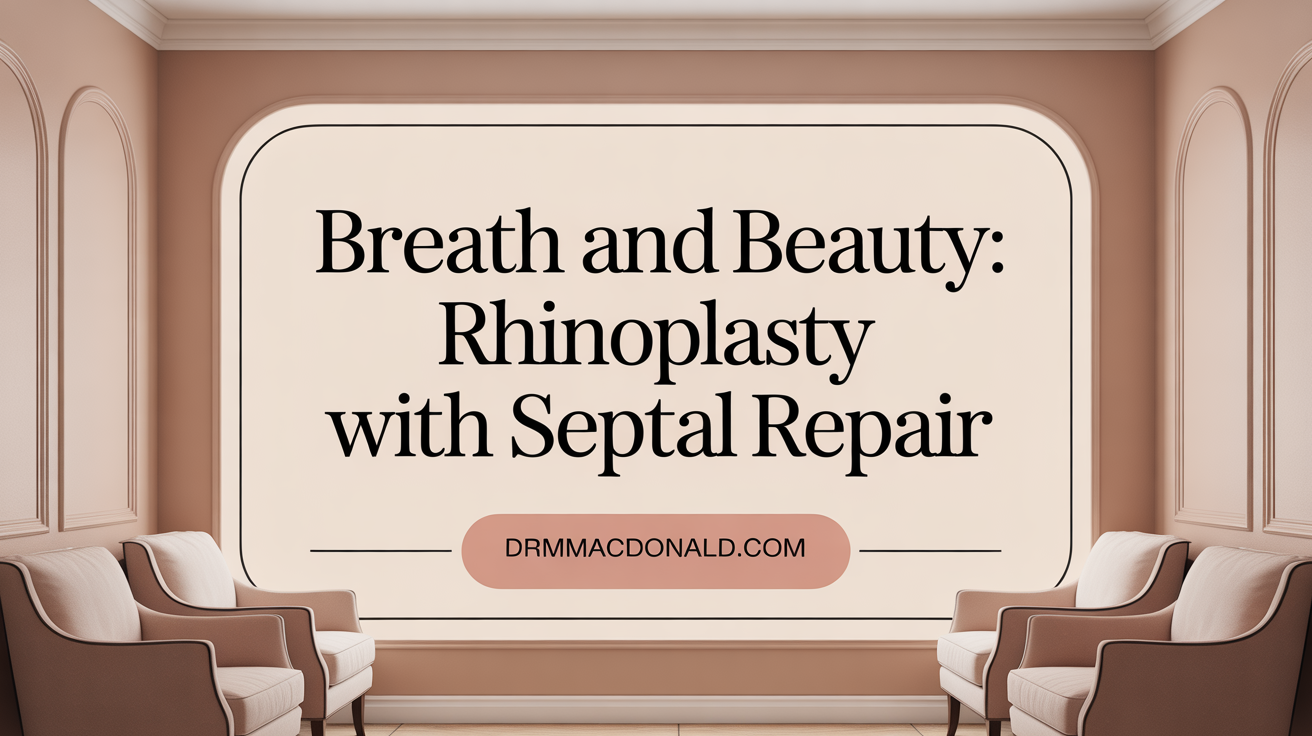 This case highlights a patient who underwent rhinoplasty combined with septal correction to improve breathing and nasal appearance. The procedure addressed a deviated septum, which was causing airway obstruction, alongside aesthetic refinements like dorsal hump reduction and tip refinement. The dual focus on both function and aesthetics resulted in a more open airway and a well-balanced nasal profile, demonstrating how modern rhinoplasty techniques can enhance life quality and facial harmony for long-term satisfaction.
This case highlights a patient who underwent rhinoplasty combined with septal correction to improve breathing and nasal appearance. The procedure addressed a deviated septum, which was causing airway obstruction, alongside aesthetic refinements like dorsal hump reduction and tip refinement. The dual focus on both function and aesthetics resulted in a more open airway and a well-balanced nasal profile, demonstrating how modern rhinoplasty techniques can enhance life quality and facial harmony for long-term satisfaction.
26. Refining Thick Skin in Ethnic Rhinoplasty for Enhanced Definition
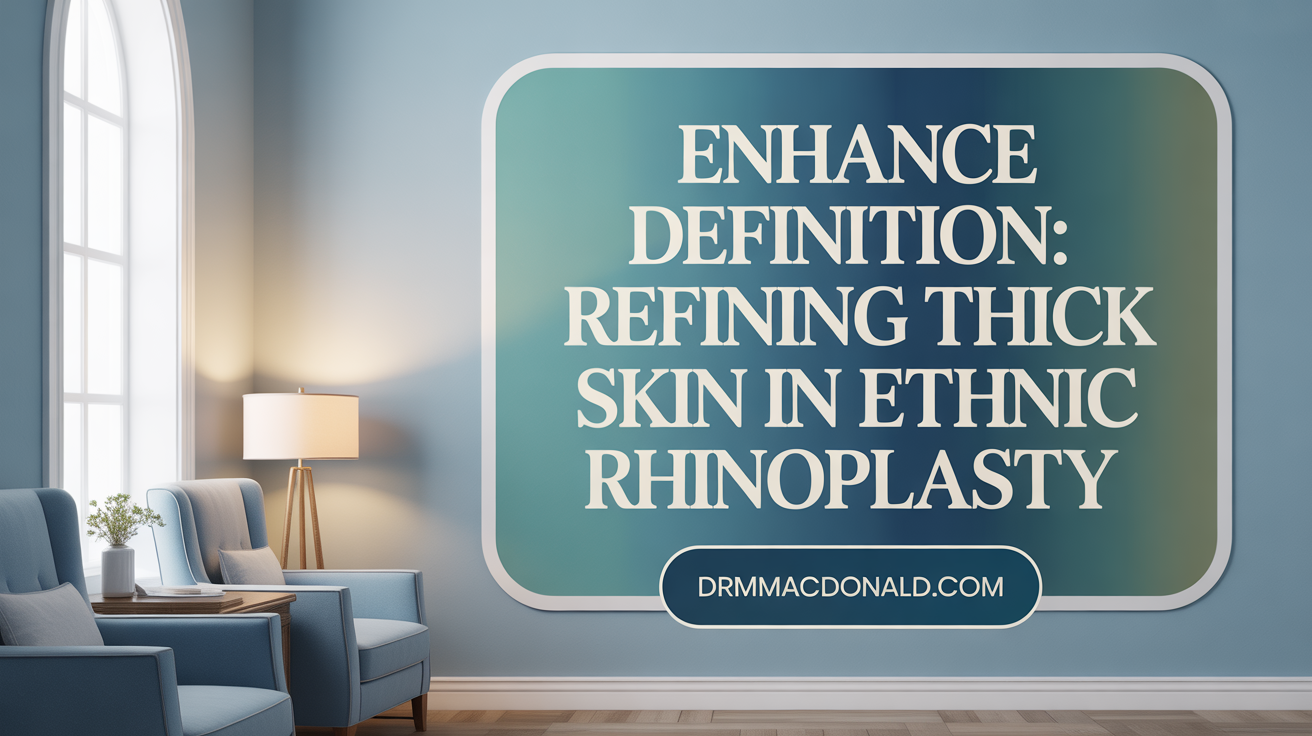 Thick skin can pose challenges in achieving sharp, refined nasal contours, especially in ethnic rhinoplasty. Surgeons use tailored techniques like precise cartilage modification and skin tightening to improve definition while preserving natural ethnic features. The goal is to enhance the nose's shape without losing cultural identity, ensuring results look harmonious and authentic. Before-and-after images available online demonstrate significant improvements, highlighting the effectiveness of experienced surgical approaches.
Thick skin can pose challenges in achieving sharp, refined nasal contours, especially in ethnic rhinoplasty. Surgeons use tailored techniques like precise cartilage modification and skin tightening to improve definition while preserving natural ethnic features. The goal is to enhance the nose's shape without losing cultural identity, ensuring results look harmonious and authentic. Before-and-after images available online demonstrate significant improvements, highlighting the effectiveness of experienced surgical approaches.
27. Postoperative Outcomes 3 Months After Closed Rhinoplasty Showing Early Healing
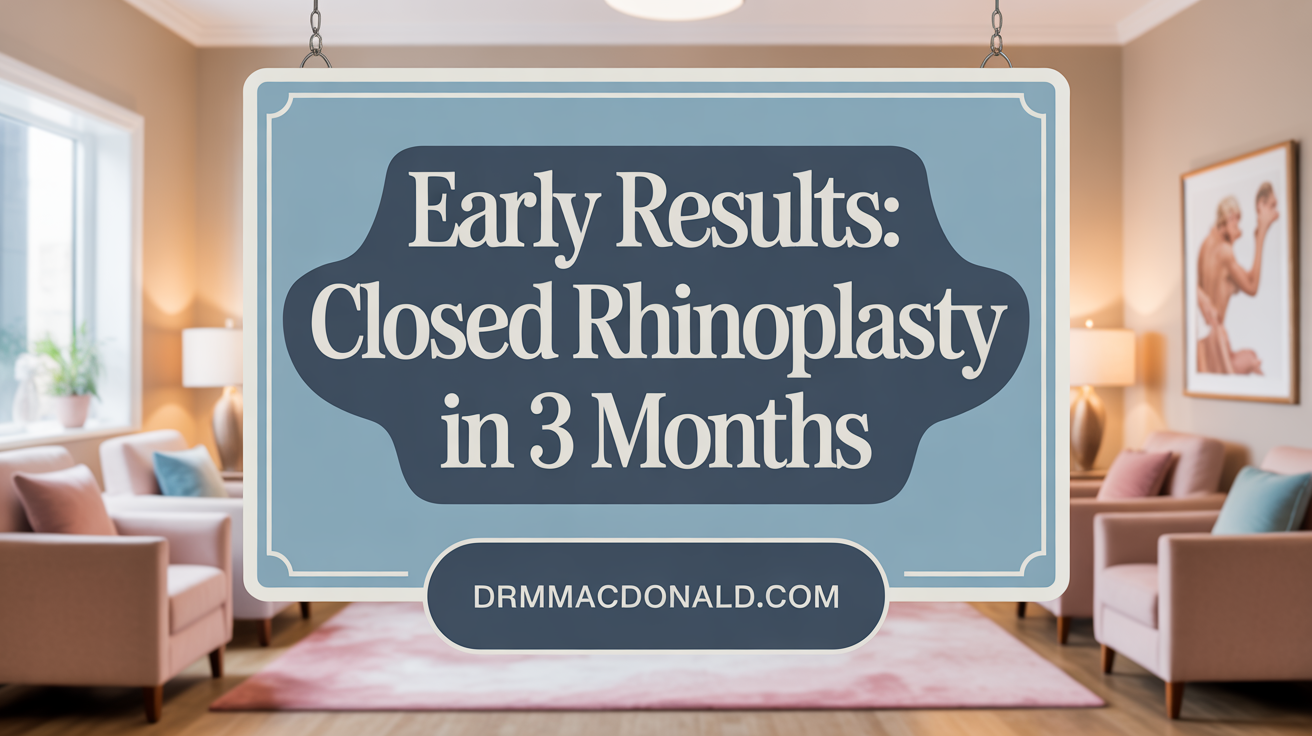
Closed rhinoplasty technique
This minimally invasive approach involves incisions inside the nostrils, resulting in scarring that is not visible externally. It enables precise reshaping of the nose with less swelling.
Short-term recovery
Patients typically experience swelling and bruising around the eyes that peak within the first few days and gradually subside over a week. Nasal splints are usually removed after about a week.
Early aesthetic results
By three months, most patients notice a significant reduction in swelling with initial refinement of the nasal shape. The early results often reflect the final outcome, showcasing a more balanced and harmonious nose.
28. Revision Rhinoplasty Case with Chin Implant Achieving Facial Balance and Patient Satisfaction
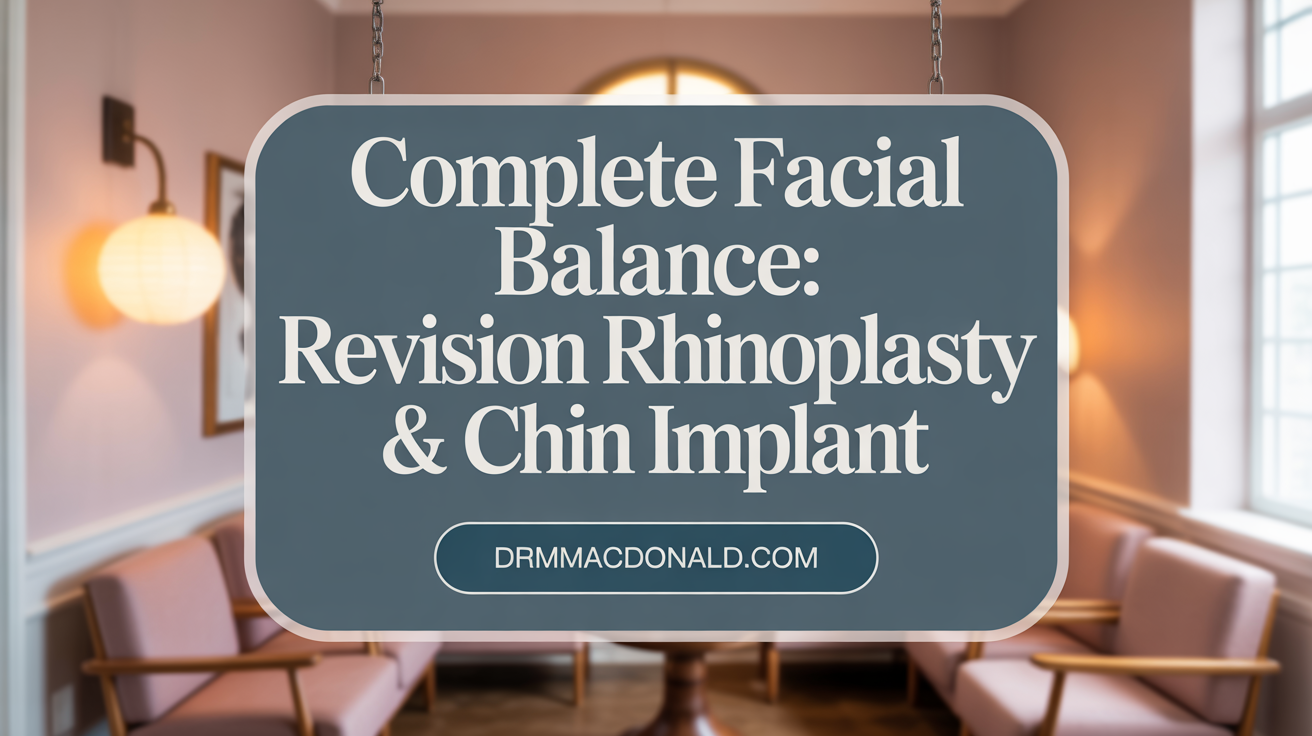 This case highlights a patient who sought revision rhinoplasty combined with chin augmentation to enhance overall facial harmony. Revision surgery is often necessary to correct previous results or improve nasal function, especially in complex cases. By combining procedures like rhinoplasty and chin implant, surgeons can create a more balanced profile, addressing disproportionate features.
This case highlights a patient who sought revision rhinoplasty combined with chin augmentation to enhance overall facial harmony. Revision surgery is often necessary to correct previous results or improve nasal function, especially in complex cases. By combining procedures like rhinoplasty and chin implant, surgeons can create a more balanced profile, addressing disproportionate features.
The patient experienced significant improvements in nasal shape, including correction of nasal deformities and enhanced breathing, while the chin augmentation added projection for facial symmetry. The results achieved look natural and are designed to complement the patient’s facial features, demonstrating the importance of a personalized approach.
Long-term follow-up shows very durable outcomes, with patient satisfaction high at over a year post-surgery. Skilled techniques and attention to maintaining natural proportions contribute to these lasting, harmonious results.
29. Subtle Nose Profile Refinement in Patients Over 50 for Natural Aging Results
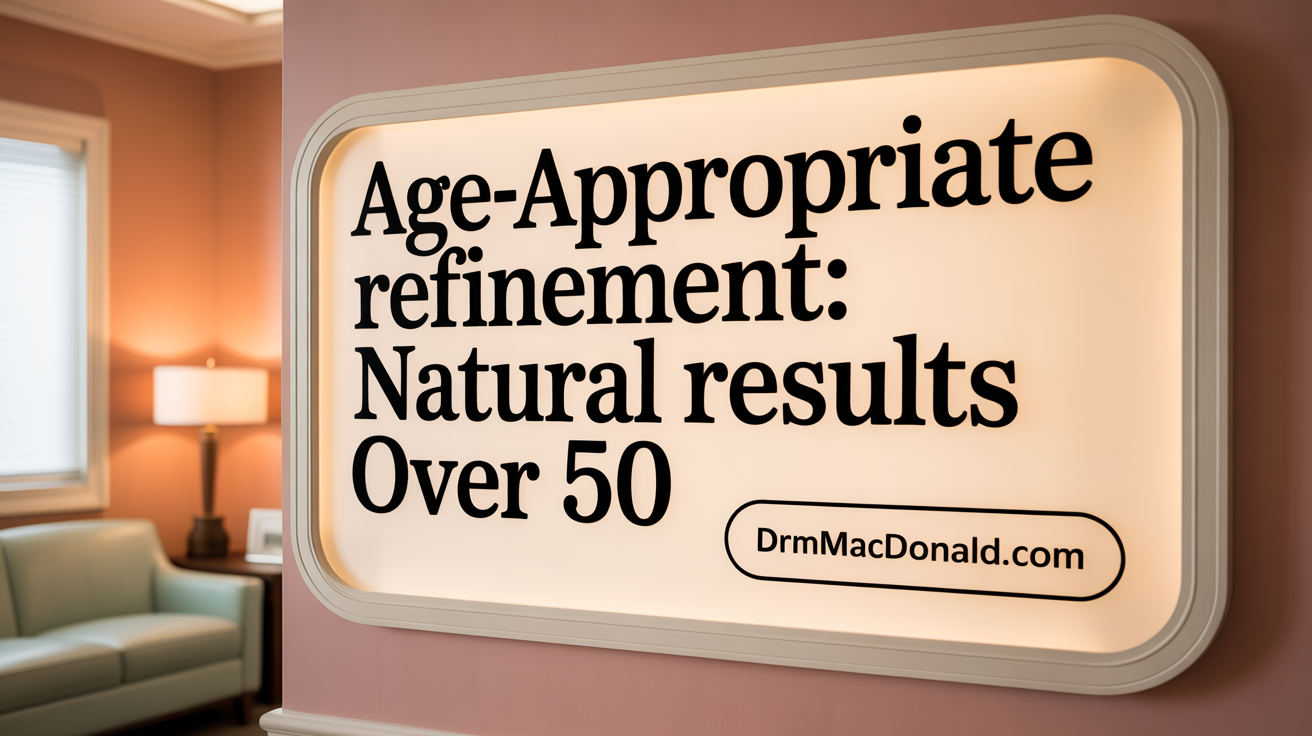 As individuals age, their noses often develop signs of gravity and structural changes, leading to drooping tips or a bulbous appearance. For patients over 50, rhinoplasty focuses on subtle enhancements that restore a more youthful and natural look without drastic transformations.
As individuals age, their noses often develop signs of gravity and structural changes, leading to drooping tips or a bulbous appearance. For patients over 50, rhinoplasty focuses on subtle enhancements that restore a more youthful and natural look without drastic transformations.
Aging noses benefit from refined tip elevation and minor narrowing, which can lift a drooping tip and enhance facial harmony. These delicate adjustments help patients achieve a balanced profile, maintaining their ethnic features while reducing age-related concerns.
Results of these careful refinements are typically subtle yet impactful, with most patients noticing improvement around 6 to 12 months post-surgery. This approach ensures a natural, age-appropriate appearance that boosts confidence while preserving individual identity.
30. Functional and Cosmetic Rhinoplasty to Address Nasal Obstruction and Shape
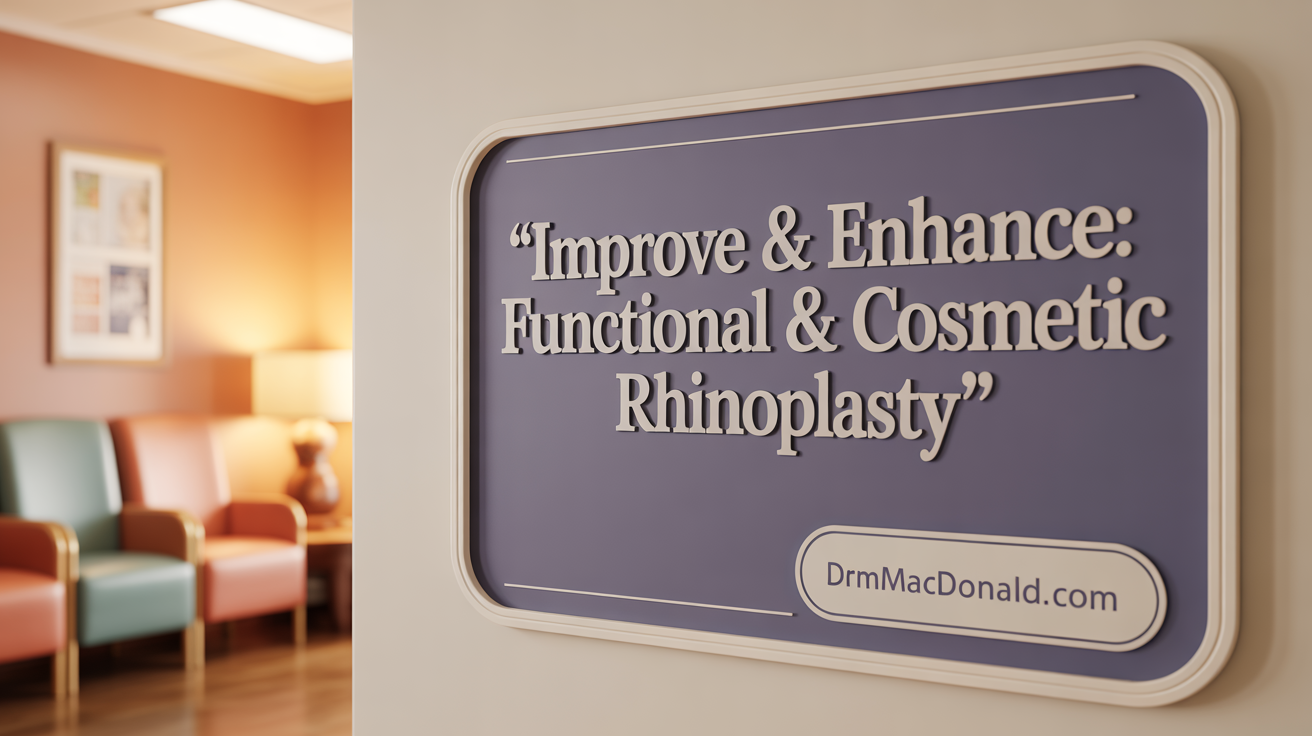
Nasal airway obstruction correction
Rhinoplasty not only improves the nose's appearance but also enhances breathing by correcting structural issues like septal deviations. Procedures such as septal reconstruction and turbinate reduction restore airflow, reducing nasal congestion and improving quality of life.
Cosmetic reshaping
The surgery can refine various nasal features, including dorsal humps, bulbous tips, and asymmetries, resulting in a more balanced facial profile. Techniques like open or closed rhinoplasty allow for tailored modifications that respect ethnic features and personal preferences.
Patient satisfaction
Patients often report high satisfaction after rhinoplasty, noting improvements in both appearance and breathing. Before and after pictures clearly demonstrate the transformation, with outcomes lasting over many years, reinforcing the durability of modern techniques.
| Technique Used | Focus Area | Typical Results | Additional Benefits |
|---|---|---|---|
| Septal Reconstruction | Airway function | Better airflow, less congestion | Improved breathing, enhanced facial harmony |
| Dorsal Hump Reduction | Nose profile | Smoother, more natural contour | Increased confidence |
| Tip Refinement | Nasal tip | More defined, proportionate tip | Aesthetic balance |
Long-term results are often achieved with techniques that preserve and support the nasal structure, ensuring both functional and cosmetic goals are met. For those considering rhinoplasty, viewing before and after images can provide valuable insight into potential outcomes.
31. Rhinoplasty Combined with Facial Fat Removal for Enhanced Facial Contours
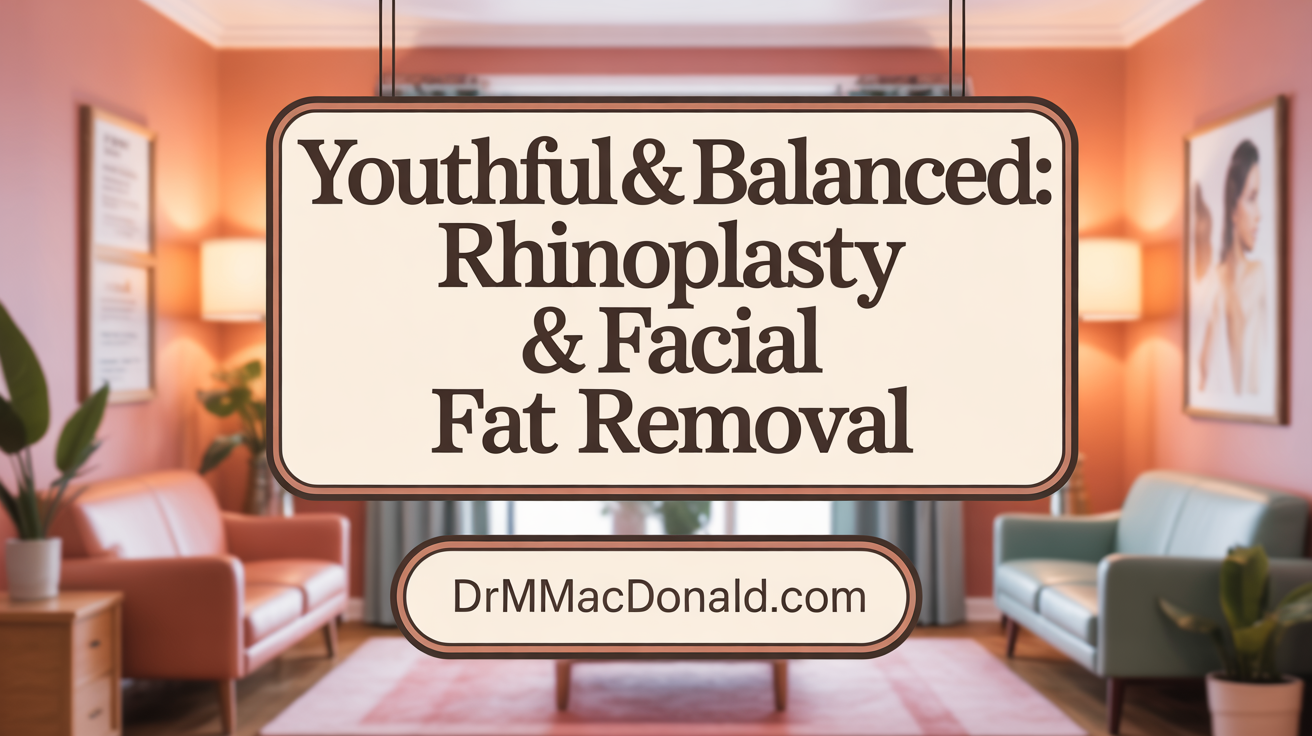 Many patients seek a comprehensive facial makeover by combining rhinoplasty with facial fat removal. This duo not only improves nose shape and function but also enhances overall facial harmony. Fat removal can redefine jawlines, cheekbones, and chin contours, complementing the refined nasal profile. Such combined procedures contribute to a more youthful appearance and balanced facial proportions, resulting in natural, rejuvenated looks. Long-term results are generally durable, and this approach is increasingly popular among those aiming for subtle but impactful facial improvements.
Many patients seek a comprehensive facial makeover by combining rhinoplasty with facial fat removal. This duo not only improves nose shape and function but also enhances overall facial harmony. Fat removal can redefine jawlines, cheekbones, and chin contours, complementing the refined nasal profile. Such combined procedures contribute to a more youthful appearance and balanced facial proportions, resulting in natural, rejuvenated looks. Long-term results are generally durable, and this approach is increasingly popular among those aiming for subtle but impactful facial improvements.
32. Patient With Crooked Nose Undergoing Open Rhinoplasty to Restore Symmetry
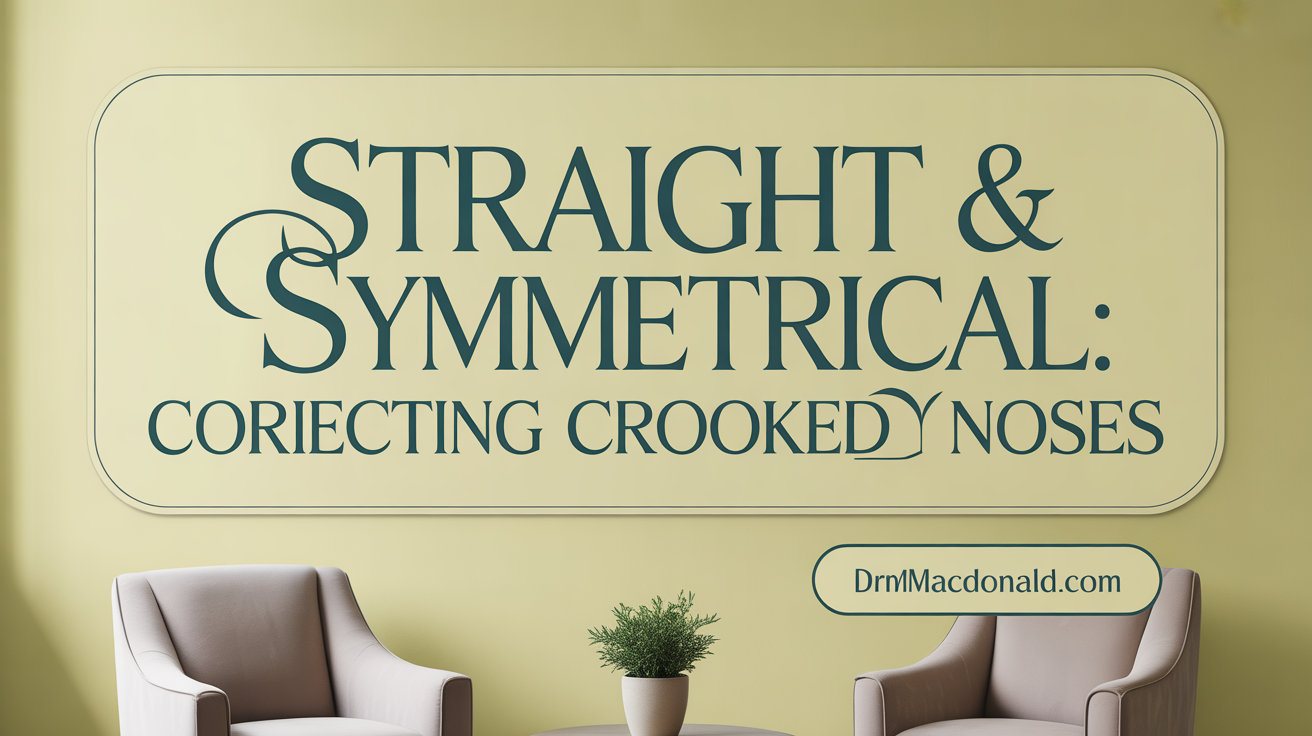
Crooked Nose Correction
Patients with a crooked nose often seek rhinoplasty to improve symmetry and facial harmony. This deformity can result from genetic factors, trauma, or previous surgeries.
Open Rhinoplasty Approach
The open rhinoplasty technique involves a small incision across the columella, allowing precise reshaping of nasal structures. Surgeons can access the nasal bones, cartilage, and septum for thorough correction.
Restoring Symmetry
The primary goal is to straighten the nasal bridge and align the nose with other facial features. Postoperative results typically show improved balance and natural appearance, as seen in before and after photos.
33. Rhinoplasty in Patients with Drooping Tips Achieving Youthful Nasal Lift

How is drooping tip correction achieved?
Patients with a drooping nasal tip often seek rhinoplasty to restore a more youthful, lifted appearance. Surgeons utilize various techniques to elevate the tip and enhance facial harmony. These include cartilage repositioning, tip support grafts, and meticulous soft tissue management.
What tips are used to lift and support the nose?
Tip lifting techniques focus on reshaping and supporting nasal cartilage. Common methods include the use of columellar struts or grafts, which reinforce tip projection. Preservation rhinoplasty and tip support sutures are also employed to create a natural, elevated look, tailored to the patient's facial features.
How does rhinoplasty contribute to facial rejuvenation?
Addressing a drooping tip not only improves nasal aesthetics but also contributes to overall facial rejuvenation. A lifted tip can make the face appear more youthful, with a refreshed profile and balanced proportions. Long-term results typically maintain a natural appearance, especially with precise, structural support during surgery.
34. Refining Nasal Bridge Width to Harmonize Facial Features
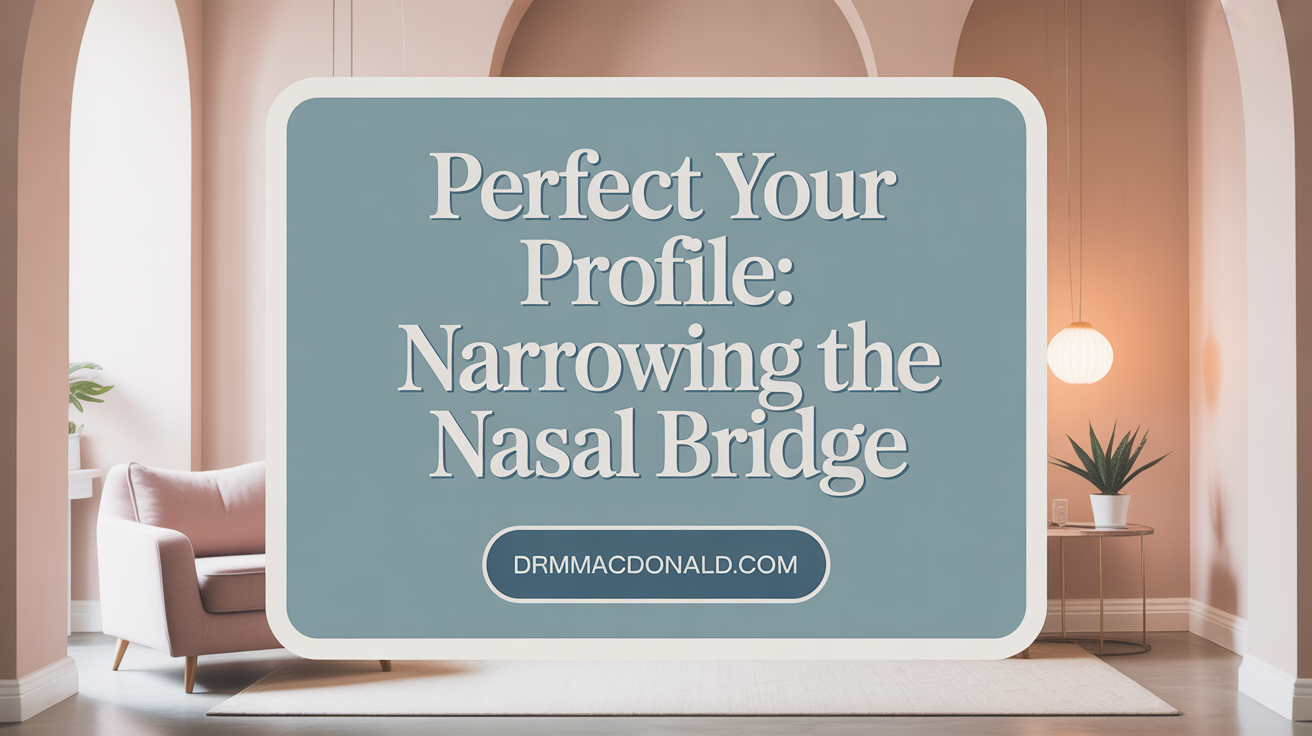 Many patients seek rhinoplasty to address a wide nasal dorsum, which can make facial features appear unbalanced. Narrowing the bridge through targeted procedures, such as lateral nasal osteotomy, effectively reduces width while maintaining natural contours.
Many patients seek rhinoplasty to address a wide nasal dorsum, which can make facial features appear unbalanced. Narrowing the bridge through targeted procedures, such as lateral nasal osteotomy, effectively reduces width while maintaining natural contours.
Bridge refinement involves reshaping or reducing dorsal humps and broad features to create a smoother, more harmonious profile. Combining these techniques with tip adjustments results in facial symmetry and improved aesthetic proportion.
By focusing on both narrowing the nasal bridge and enhancing overall profile balance, surgeons help patients achieve a more cohesive look that complements their facial features. Long-term results are typically natural and stable, emphasizing personalized care for each individual.
35. Ethnically Sensitive Bulbous Tip Correction with Preservation of Identity

Ethnic rhinoplasty and bulbous tip reshaping
Ethnic rhinoplasty focuses on refining the nose while maintaining the patient’s cultural and facial identity. For noses with a bulbous tip, surgeons employ techniques like precise tip refinement and cartilage reshaping to achieve a natural, proportionate appearance.
How is cultural aesthetic preserved?
The goal is to enhance harmony without erasing ethnic features. Skilled surgeons adapt their approach to each individual by respecting specific nasal characteristics and using conservative techniques that preserve the nose’s natural shape and size.
Long-term results and patient satisfaction
Patients enjoy lasting results that maintain their ethnic identity. Postoperative photos show refined, harmonious noses, often with improved airflow and function. Surgeons carefully plan procedures to achieve natural results that age well over time.
36. Real Patient Results From Nose Hump Reduction And Tip Refinement
 The gallery showcases numerous real patient outcomes following nose hump reduction and tip refinement procedures. Many patients achieve a smoother profile with a diminished dorsal hump, creating a more balanced look. Tip reshaping enhances nasal harmony, refining features such as drooping or bulbous tips to match facial proportions. These transformations result in an improved nasal profile that complements overall facial aesthetics, boosting confidence and achieving natural results.
The gallery showcases numerous real patient outcomes following nose hump reduction and tip refinement procedures. Many patients achieve a smoother profile with a diminished dorsal hump, creating a more balanced look. Tip reshaping enhances nasal harmony, refining features such as drooping or bulbous tips to match facial proportions. These transformations result in an improved nasal profile that complements overall facial aesthetics, boosting confidence and achieving natural results.
37. Rhinoplasty for Breathing Improvement with Simultaneous Cosmetic Enhancement
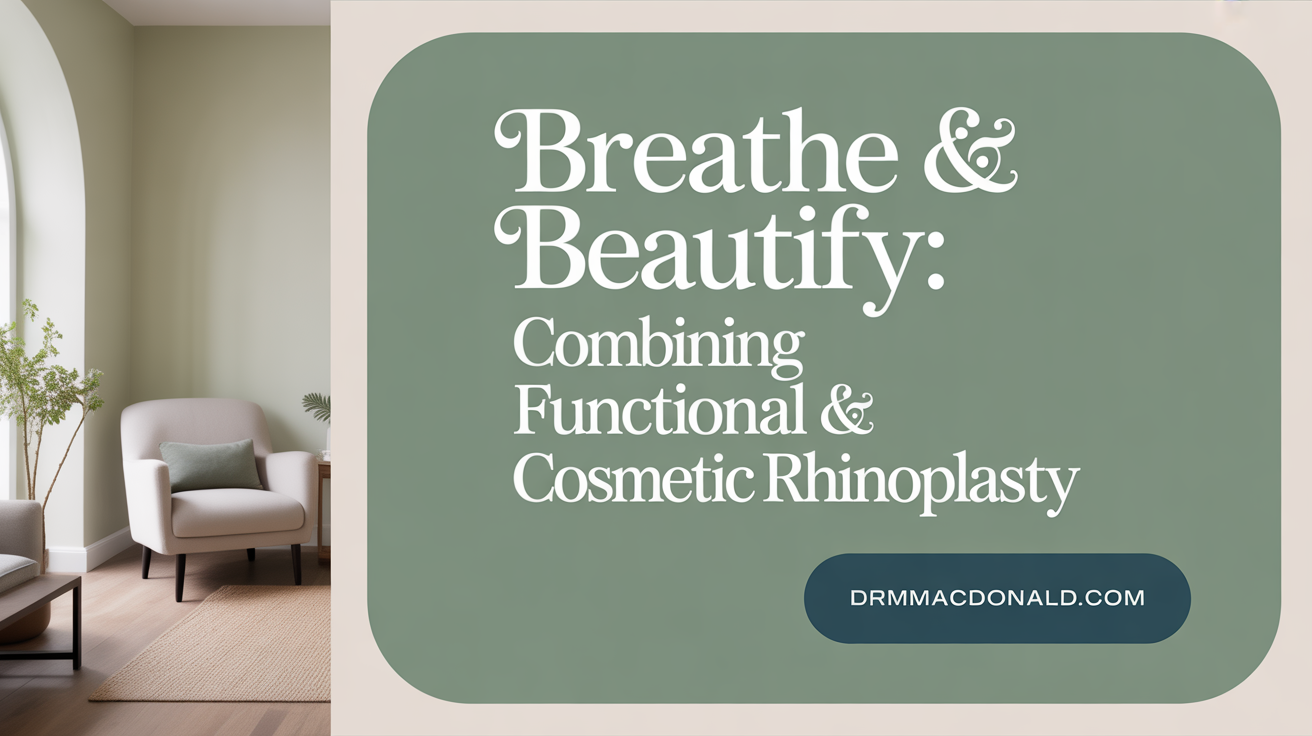 Rhinoplasty often combines functional repairs, like septal reconstruction, with cosmetic reshaping to enhance nasal appearance and breathing. Patients benefit from improved airflow and aesthetic balance, making it a comprehensive approach to nose surgery.
Rhinoplasty often combines functional repairs, like septal reconstruction, with cosmetic reshaping to enhance nasal appearance and breathing. Patients benefit from improved airflow and aesthetic balance, making it a comprehensive approach to nose surgery.
38. Long-Term Patient Transformation Showing Stable Results After Over 13 Months
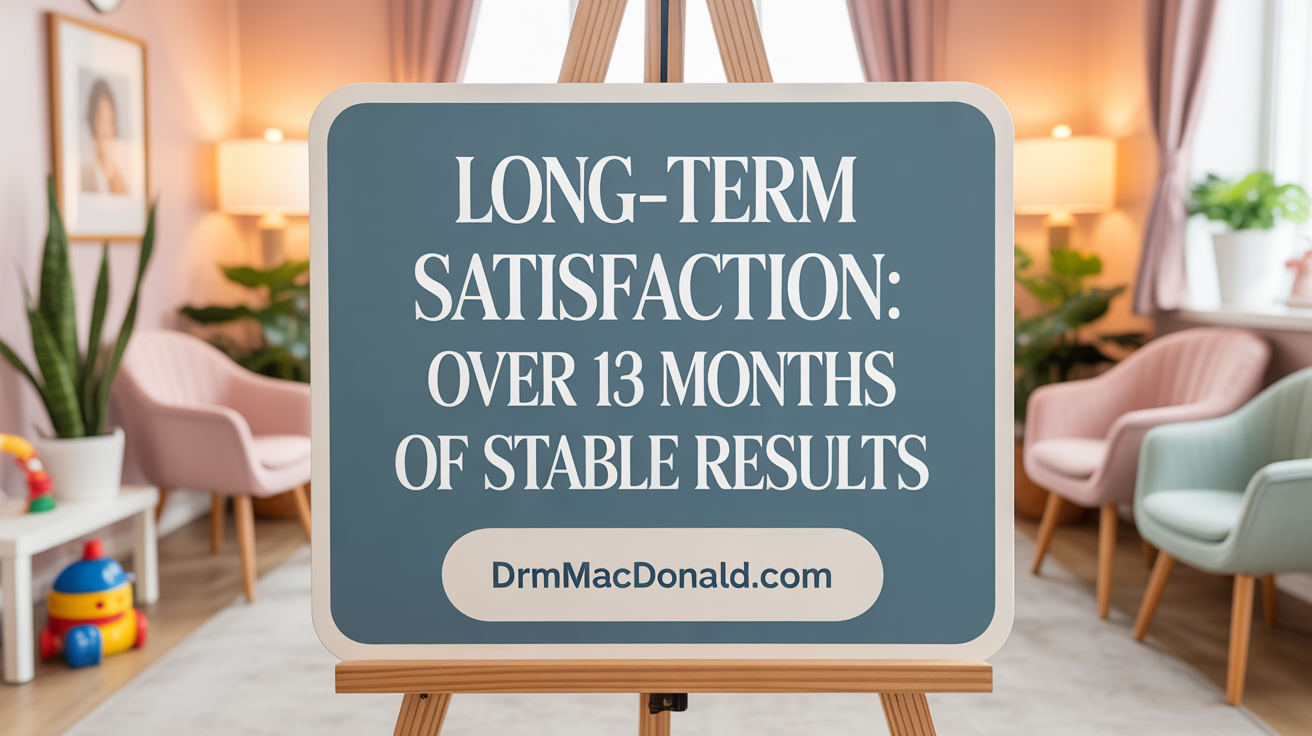 Patients who undergo rhinoplasty often look forward to long-lasting and natural results. Follow-up images taken over 13 months show that the improvements — such as refined nasal shapes, balanced profiles, and corrected asymmetries — remain stable over time.
Patients who undergo rhinoplasty often look forward to long-lasting and natural results. Follow-up images taken over 13 months show that the improvements — such as refined nasal shapes, balanced profiles, and corrected asymmetries — remain stable over time.
Long-term success depends on the surgeon's technique, especially on preserving nasal support structures. Modern methods aim to reinforce the nose's framework, preventing deformities or collapse as aging progresses.
While aging naturally influences the face, rhinoplasty results typically do not deteriorate if the surgery maintains structural integrity. Factors like skin thickness, genetics, trauma, and lifestyle can affect how a nose ages post-surgery.
The consistent outcomes in long-term follow-ups demonstrate that suitably performed rhinoplasty offers durable and natural-looking changes that withstand the test of time.
39. Successful Wide Nostril Flare Correction and Facial Base Narrowing
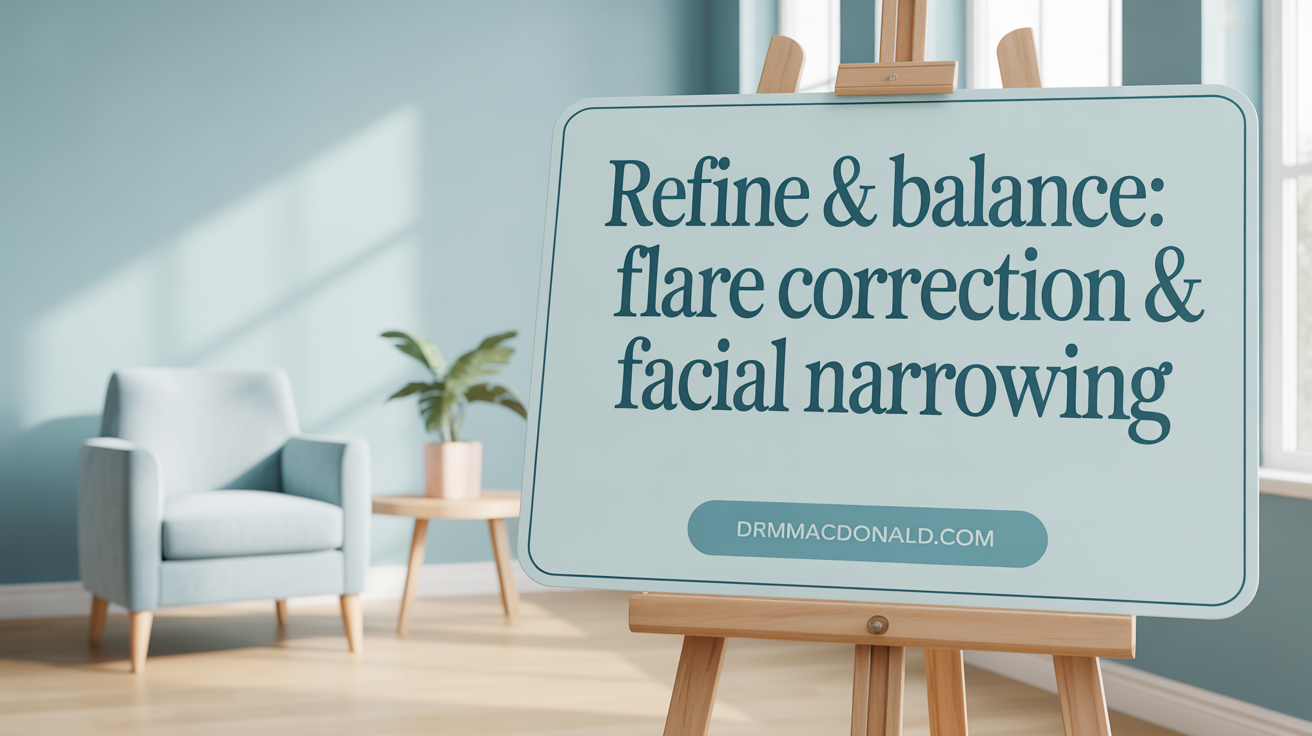 Many patients seek rhinoplasty to refine wide nostrils and reduce alar flare, creating a more balanced appearance. Techniques such as alar base resection help narrow nasal width, enhancing facial harmony. In addition, nasal base narrowing contributes to a natural, proportionate look that complements other facial features. Before and after photos demonstrate significant improvements, showing tighter, more refined nostrils and a narrower facial base, resulting in greater confidence and aesthetic satisfaction.
Many patients seek rhinoplasty to refine wide nostrils and reduce alar flare, creating a more balanced appearance. Techniques such as alar base resection help narrow nasal width, enhancing facial harmony. In addition, nasal base narrowing contributes to a natural, proportionate look that complements other facial features. Before and after photos demonstrate significant improvements, showing tighter, more refined nostrils and a narrower facial base, resulting in greater confidence and aesthetic satisfaction.
40. Rhinoplasty for Teenage Patient With Nasal Tip Bulbousness and Slight Deviation

Teen rhinoplasty
Rhinoplasty for teenagers is performed after facial growth is complete, usually after age 18, to ensure long-lasting results. This procedure helps refine nasal shape, improve facial harmony, and boost self-confidence.
Bulbous tip and deviation
Many young patients seek correction for bulbous nasal tips and slight deviations. Techniques like open rhinoplasty and tip refinement are used to sculpt the nose, creating a more proportional and balanced appearance while maintaining natural features.
Age-appropriate refinements
Adjustments are tailored to an adolescent’s facial development, focusing on subtle, natural improvements. Surgeons aim for outcomes that suit the patient’s age, avoiding overly drastic changes and ensuring the nose complements the overall face for a harmonious look.
41. Patient Transformation Featuring Complex Septal Cartilage Reconstruction
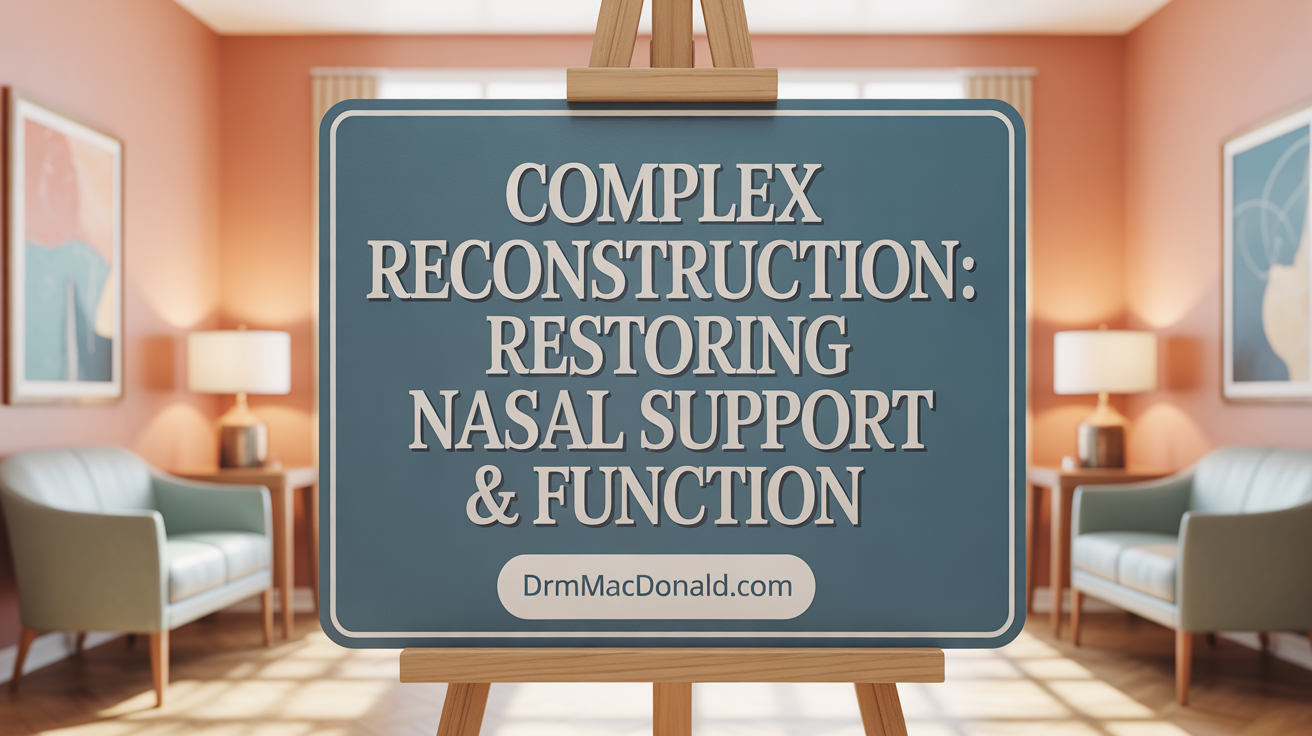 This patient underwent a sophisticated septal cartilage reconstruction to restore nasal support and function after previous surgeries. The procedure involved reinforcing the nasal internal structure with carefully harvested septal cartilage, ensuring both stability and improved airflow. Alongside aesthetic refinements, such as tip refinement and dorsal hump correction, the surgery significantly enhanced breathing capability.
This patient underwent a sophisticated septal cartilage reconstruction to restore nasal support and function after previous surgeries. The procedure involved reinforcing the nasal internal structure with carefully harvested septal cartilage, ensuring both stability and improved airflow. Alongside aesthetic refinements, such as tip refinement and dorsal hump correction, the surgery significantly enhanced breathing capability.
Postoperative results, visible after six months, showcase a straightened nasal profile, a more natural tip, and restored structural integrity. Patients like this exemplify how complex septal reconstructions can address both functional problems and aesthetic concerns, leading to long-lasting, harmonious outcomes.
42. Closed Rhinoplasty Resulting in Refined Nose Shape with Minimal Scarring
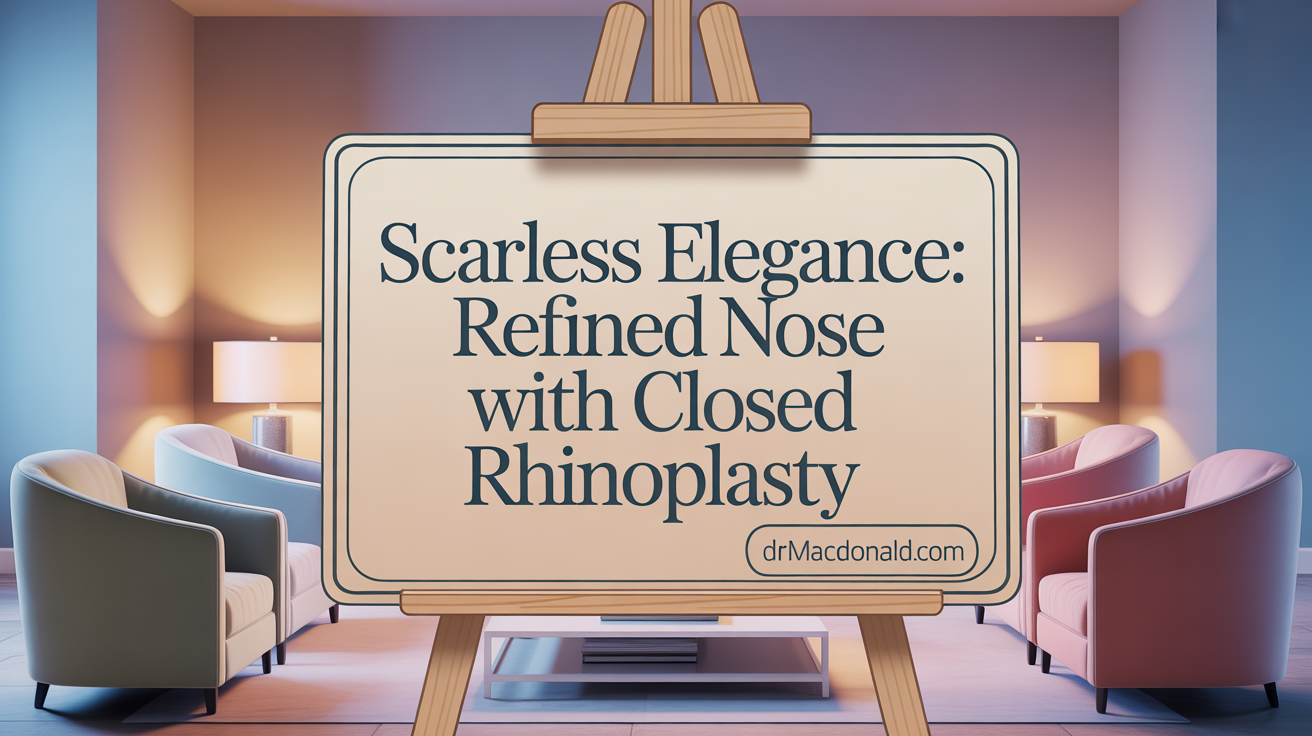
What are the benefits of closed rhinoplasty?
Closed rhinoplasty offers a minimally invasive approach, with incisions hidden inside the nostrils. This technique reduces visible scarring and typically results in quicker recovery.
How does it achieve a refined nasal profile?
By precisely restructuring the nose’s bones and cartilage through internal access, closed rhinoplasty allows surgeons to achieve natural, subtle reshaping. This helps in refining the nasal profile, correcting dorsal humps, and balancing nasal features.
How does this approach minimize scars?
Since all incisions are made inside the nose, there are no external scars. This ensures a more discreet recovery, making it a popular choice for patients seeking natural aesthetic improvements with minimal visible marks.
Overview of patient outcomes
Many patients demonstrate significant improvements in nasal harmony with results typically visible around 6 months post-surgery. The approach emphasizes preservation of natural nasal structure while enhancing facial balance.
Search for visual examples
Interested individuals can explore "Closed rhinoplasty patient before and after images" to see real results highlighting the procedure’s effectiveness and scarless nature.
43. Combined Rhinoplasty and Blepharoplasty Transforming Facial Aesthetics
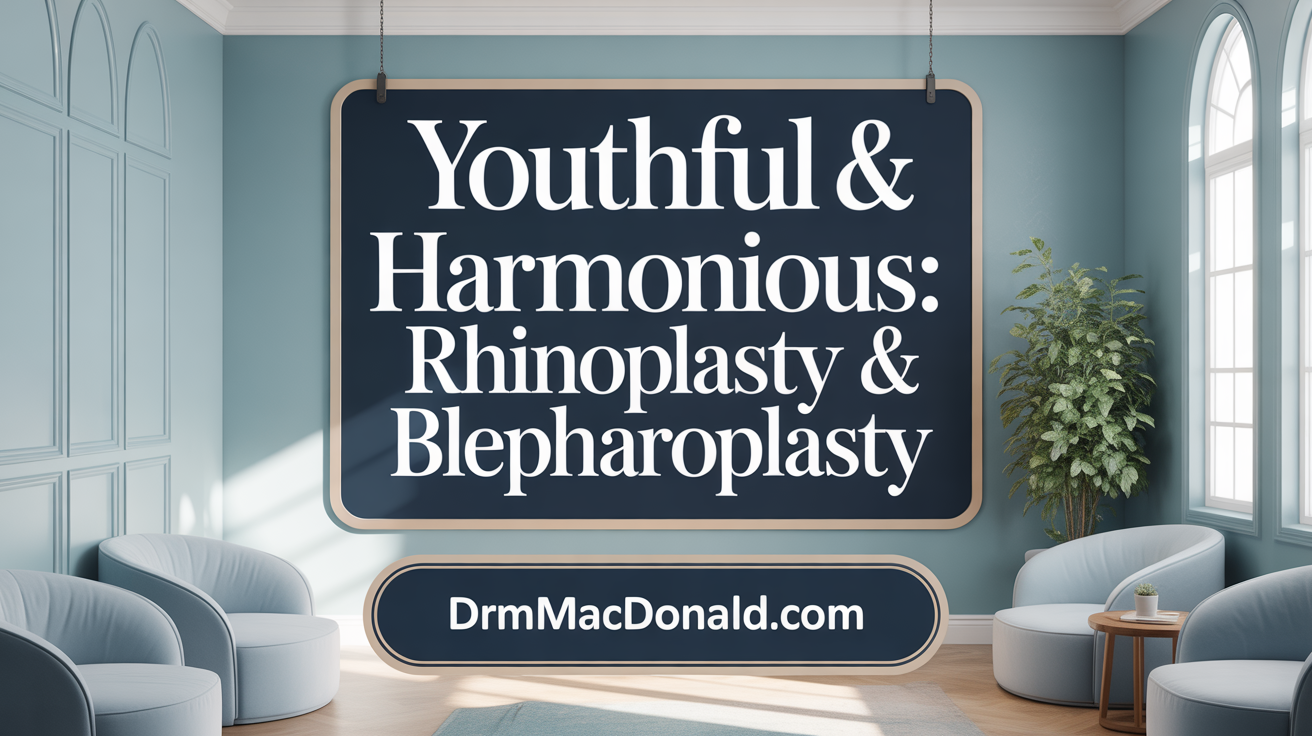 Combining rhinoplasty with blepharoplasty enhances overall facial harmony by addressing nose shape and eye aesthetics. These procedures work together to produce natural, balanced results, improving facial proportions and boosting confidence. Patients often choose this combined approach for a more youthful, refreshed appearance that emphasizes their natural features.
Combining rhinoplasty with blepharoplasty enhances overall facial harmony by addressing nose shape and eye aesthetics. These procedures work together to produce natural, balanced results, improving facial proportions and boosting confidence. Patients often choose this combined approach for a more youthful, refreshed appearance that emphasizes their natural features.
44. MTF Rhinoplasty With Rib Grafts Creating Feminine Nasal Contours
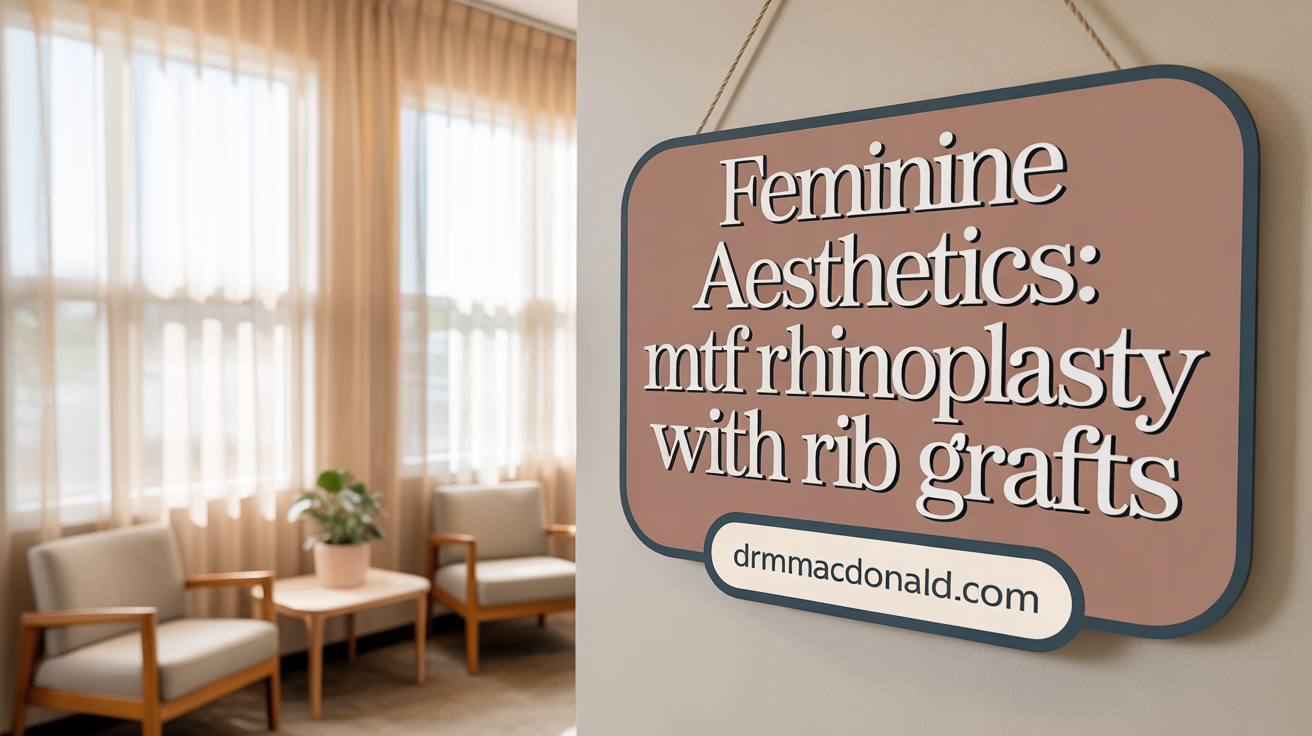 MTF (Male-to-Female) rhinoplasty often involves the use of rib grafts to craft softer, more delicate nasal contours aligned with feminine aesthetics. This technique helps achieve refined nasal bridges and tips, maintaining natural facial harmony. Using rib grafts provides sturdy support, especially in complex cases or when previous surgeries have weakened nasal structures. Results from this approach are long-lasting, with patients typically showing restored nasal form and improved airway function over several years. Before and after images demonstrate virtual transformations, highlighting smoother profiles and balanced features.
MTF (Male-to-Female) rhinoplasty often involves the use of rib grafts to craft softer, more delicate nasal contours aligned with feminine aesthetics. This technique helps achieve refined nasal bridges and tips, maintaining natural facial harmony. Using rib grafts provides sturdy support, especially in complex cases or when previous surgeries have weakened nasal structures. Results from this approach are long-lasting, with patients typically showing restored nasal form and improved airway function over several years. Before and after images demonstrate virtual transformations, highlighting smoother profiles and balanced features.
45. Patient Showing Successful Outcome of Secondary Open Rhinoplasty
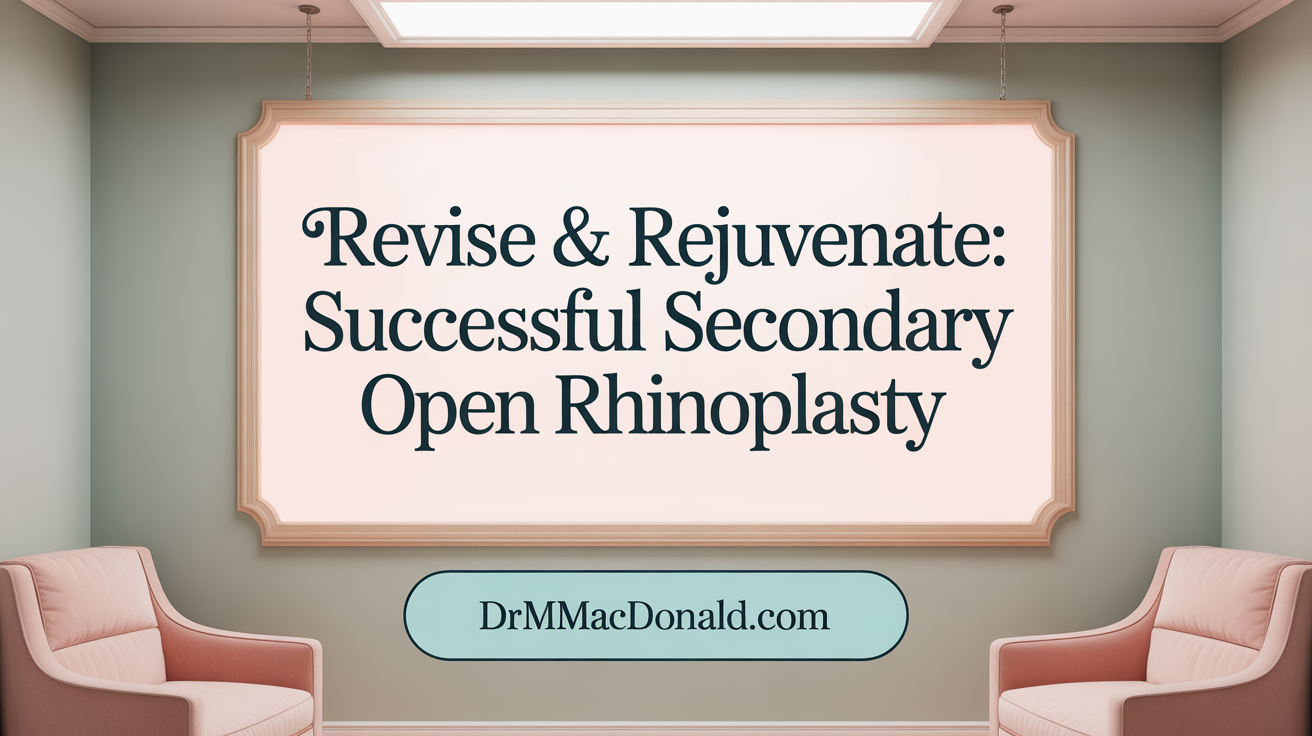
What is secondary rhinoplasty?
Secondary rhinoplasty is a revision procedure performed on patients who are not satisfied with or have complications from their initial rhinoplasty. It aims to refine nasal shape, improve function, or address deformities caused by previous surgeries.
Why choose an open approach?
The open rhinoplasty approach involves a small incision across the columella, providing enhanced visibility and access to the nasal structures. This technique is preferred for complex revisions, enabling precise modifications and better correction of deformities.
How does the procedure restore nasal form and function?
In this particular case, the patient underwent a tertiary open rhinoplasty with advanced techniques such as alar base resection and MTF rib graft placement. The surgery successfully restored the nasal contours, corrected asymmetries, and improved breathing by reconstructing weakened or damaged structures.
Long-term results and patient satisfaction
Postoperative follow-ups over four years show durable, natural-looking results. Patients experience a restored nasal profile, functional breathing improvements, and increased self-confidence. High-quality correction and attention to long-term structural stability are vital for sustained success.
46. Real Patient Journey From Wide Dorsum to Sleek Nose Profile
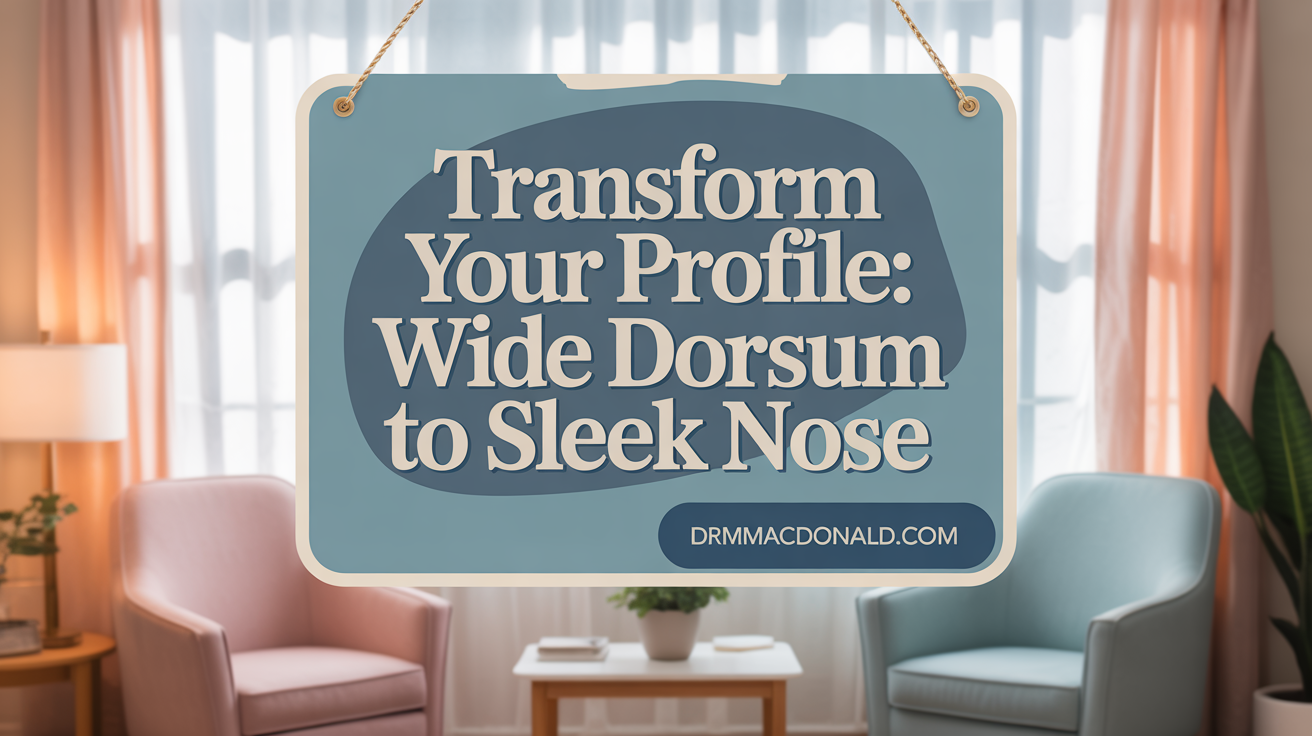 Many patients seek rhinoplasty to refine a broad nasal dorsum. Using techniques like lateral nasal osteotomy and alar base reduction, surgeons can effectively narrow wide noses.
Many patients seek rhinoplasty to refine a broad nasal dorsum. Using techniques like lateral nasal osteotomy and alar base reduction, surgeons can effectively narrow wide noses.
This transformation often results in a sleeker, more refined nasal profile. Postoperative results typically develop over six months to a year, revealing a natural outcome that complements the patient's facial features.
Achieving facial harmony is a primary goal, where the nose's appearance better balances with other features. Before-and-after photos showcase these dramatic improvements, illustrating how structural adjustments lead to a more elegant profile.
For those interested in similar changes, searching for "Wide dorsum rhinoplasty patient transformations" can provide valuable examples and inspiration.
47. Rhinoplasty for Crooked Nose and Asymmetry Improvement
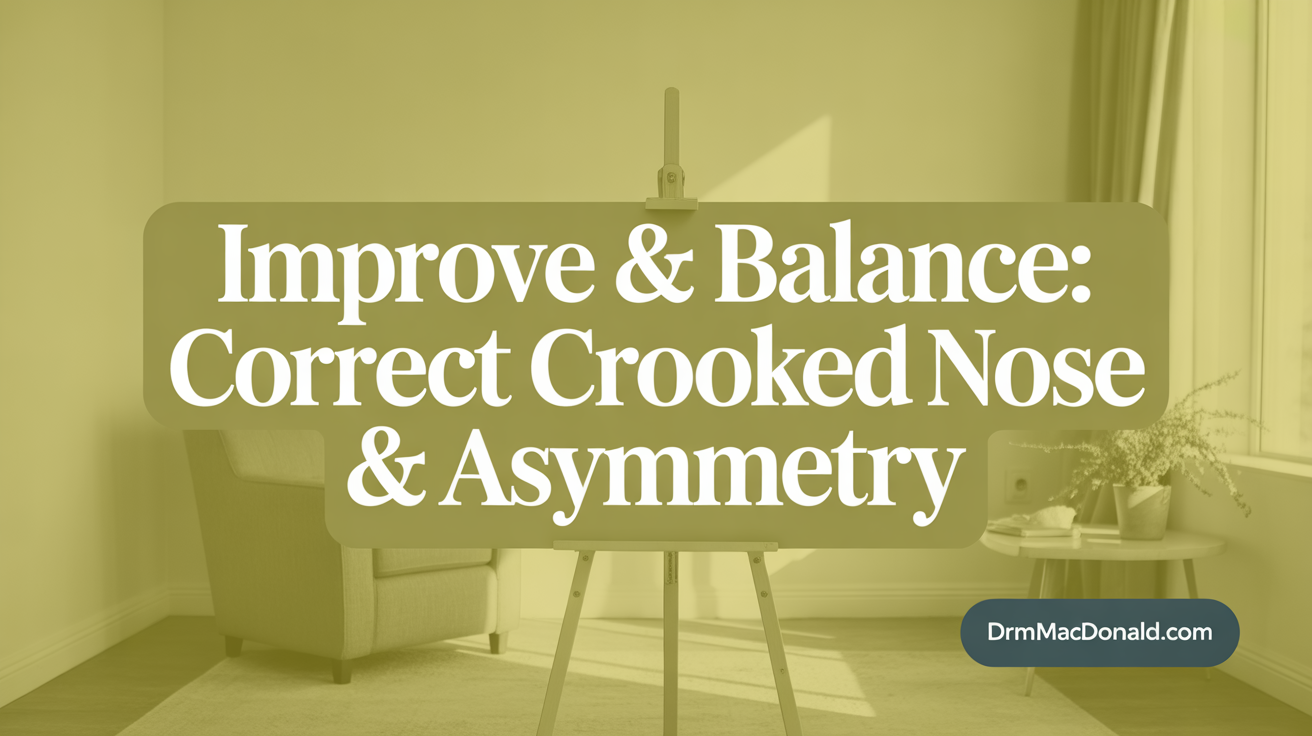 Rhinoplasty effectively corrects crooked noses and enhances facial symmetry. Patients often seek both aesthetic improvements and functional benefits, such as improved breathing. Advanced techniques allow for precise straightening of the nasal structure, resulting in a more balanced and natural-looking nose. Long-term results typically maintain the corrected shape, contributing to greater self-confidence and facial harmony.
Rhinoplasty effectively corrects crooked noses and enhances facial symmetry. Patients often seek both aesthetic improvements and functional benefits, such as improved breathing. Advanced techniques allow for precise straightening of the nasal structure, resulting in a more balanced and natural-looking nose. Long-term results typically maintain the corrected shape, contributing to greater self-confidence and facial harmony.
48. Rhinoplasty Patient Before and After with Tip Cartilage Rebuild for Projection
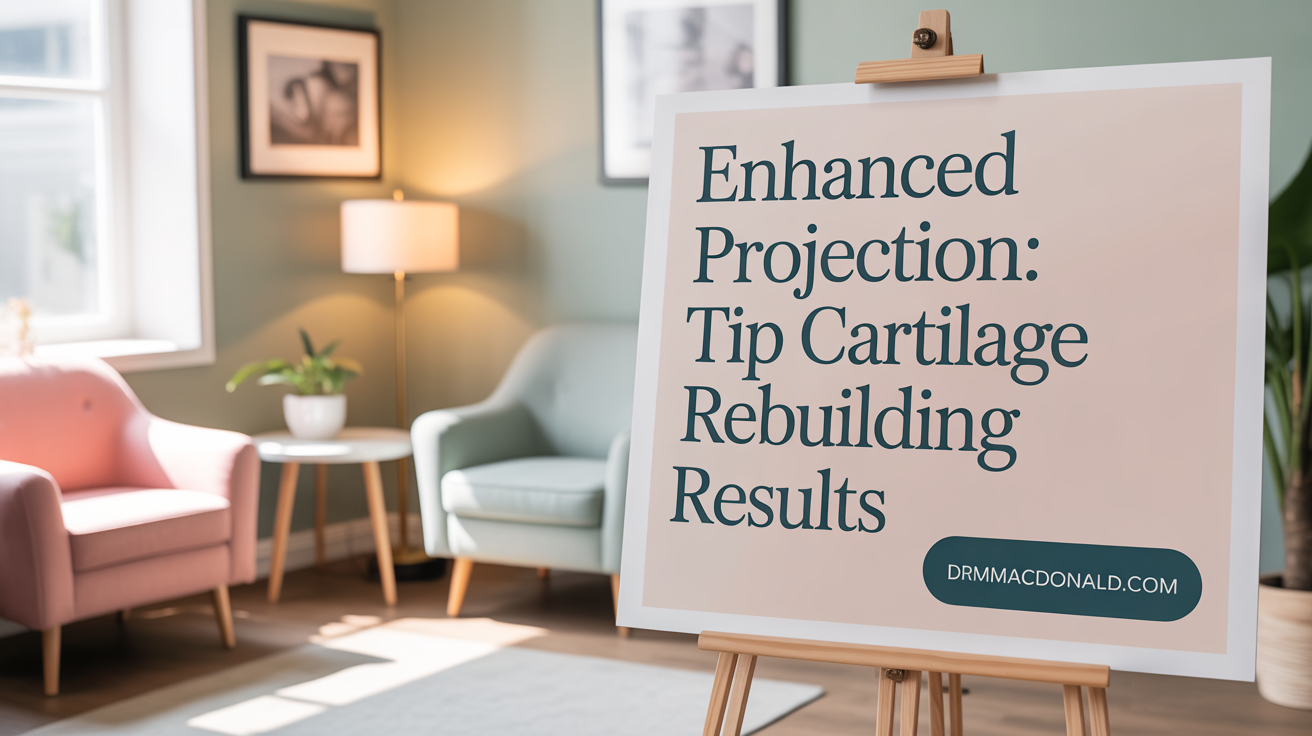 This case highlights a rhinoplasty procedure focused on rebuilding the nasal tip cartilage to improve projection. The surgery involved precise reconstruction of the nasal tip, enhancing its definition and harmony with the face. Postoperative photos demonstrate a natural, well-balanced nose with a more refined profile. Such tip cartilage rebuilds are common in cases where the tip is bulbous or droopy, helping to create a more aesthetically pleasing and proportional appearance. Patients can expect long-lasting results that contribute significantly to overall facial aesthetics.
This case highlights a rhinoplasty procedure focused on rebuilding the nasal tip cartilage to improve projection. The surgery involved precise reconstruction of the nasal tip, enhancing its definition and harmony with the face. Postoperative photos demonstrate a natural, well-balanced nose with a more refined profile. Such tip cartilage rebuilds are common in cases where the tip is bulbous or droopy, helping to create a more aesthetically pleasing and proportional appearance. Patients can expect long-lasting results that contribute significantly to overall facial aesthetics.
49. Refinement of Nasal Base and Bridge in Middle-Aged Patient
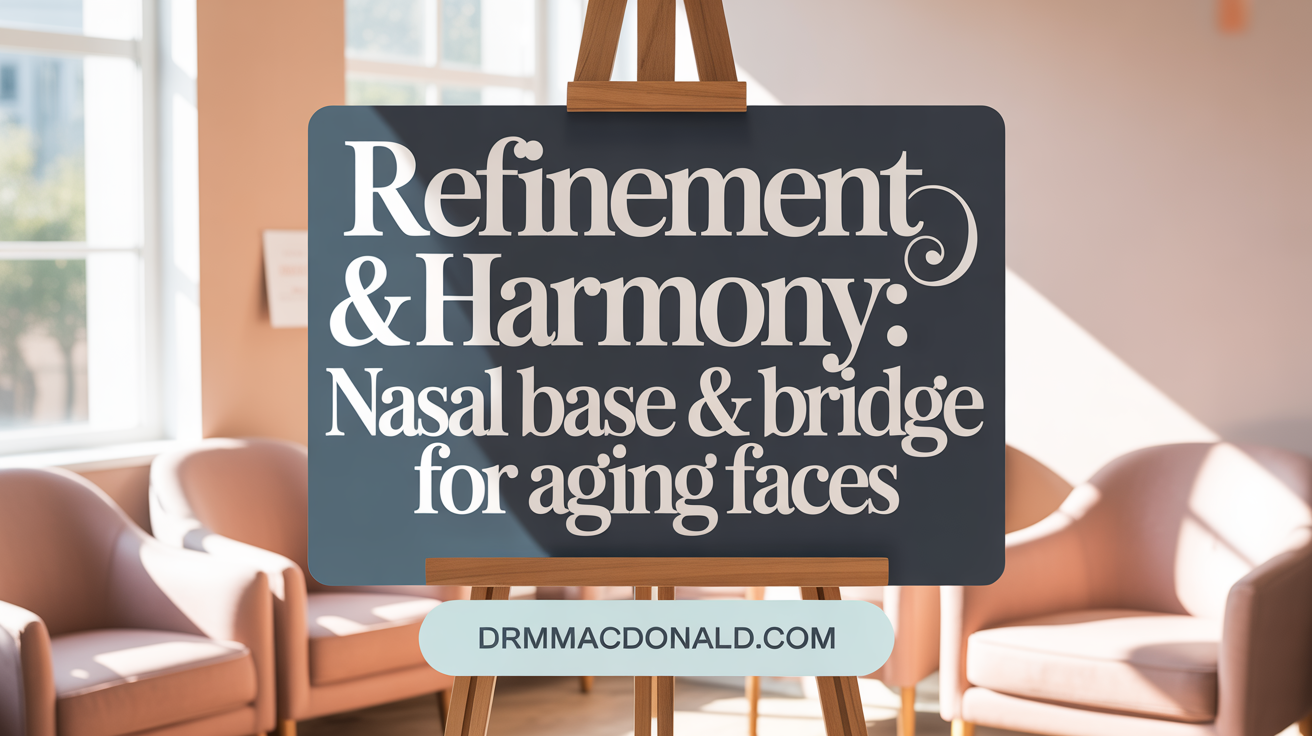 In middle-aged patients, rhinoplasty often focuses on subtle adjustments to improve facial harmony while respecting age-related changes. Nasal base refinement can include alar base reduction to soften flare and create a more balanced look. Narrowing the nasal bridge, especially if it has become broad or bulbous, is achieved through techniques such as lateral osteotomies to reshape the nasal skeleton. These procedures aim to produce a natural, age-appropriate shape that enhances facial features without appearing overly dramatic. The emphasis remains on preserving ethnic identity and ensuring results are harmonious with the patient’s overall facial structure, with long-term durability and natural appearance.
In middle-aged patients, rhinoplasty often focuses on subtle adjustments to improve facial harmony while respecting age-related changes. Nasal base refinement can include alar base reduction to soften flare and create a more balanced look. Narrowing the nasal bridge, especially if it has become broad or bulbous, is achieved through techniques such as lateral osteotomies to reshape the nasal skeleton. These procedures aim to produce a natural, age-appropriate shape that enhances facial features without appearing overly dramatic. The emphasis remains on preserving ethnic identity and ensuring results are harmonious with the patient’s overall facial structure, with long-term durability and natural appearance.
50. Functional Rhinoplasty Correcting Septal Deviation with Cosmetic Improvement
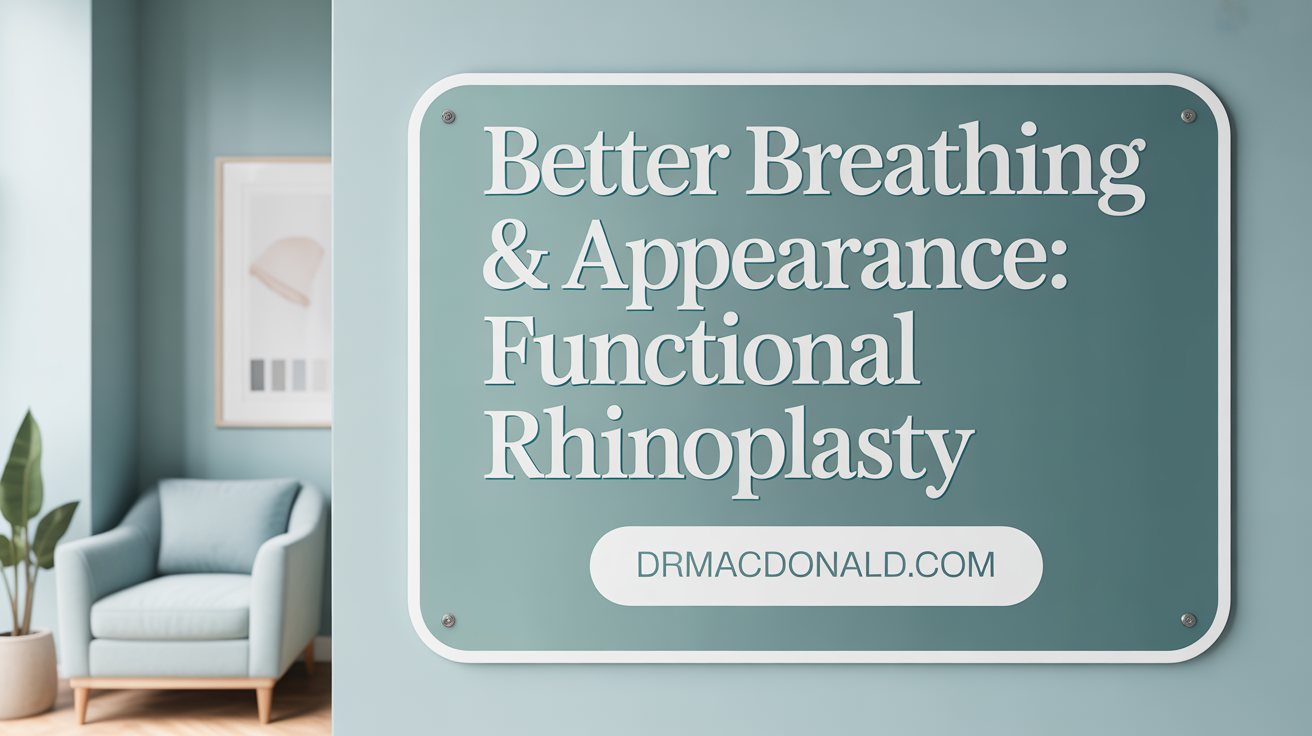
How does a dual approach address both functional and cosmetic issues?
Functional rhinoplasty aims to improve breathing by correcting structural problems like deviated septums, while cosmetic rhinoplasty enhances nose appearance. Combining both allows for a balanced solution, ensuring better airflow and a more harmonious facial look.
How is septal deviation corrected?
Septal deviation is often treated with septal reconstruction, where the nasal septum is straightened and stabilized inside the nose. This can involve cartilage grafting, septal splinting, or removal of bent cartilage, restoring proper nasal airflow.
What is patient satisfaction with these procedures?
Patients typically experience high satisfaction levels post-surgery. They report improved breathing and enhanced facial harmony, with long-term results visible in before-and-after photos for up to over three years. This comprehensive approach often results in natural, balanced outcomes that boost confidence.
Typical Rhinoplasty Results for Common Nose Types
What are typical before-and-after results of rhinoplasty for common nose types such as bulbous or wide noses?
Many patients undergoing rhinoplasty for bulbous or wide noses experience a noticeable transformation that enhances facial harmony. Post-surgery, the nose often appears narrower and more proportionate to other facial features. The dorsal hump, if present, is smoothed out, creating a cleaner nasal profile.
For bulbous noses, surgeons reshuffle the nasal cartilage and tip structure to achieve a more refined, natural tip that blends seamlessly with the face. This change often results in a more balanced and less rounded nose shape.
In cases of wide noses, techniques such as lateral nasal osteotomy and alar base reduction are used to decrease width, making the nose look more slender and elegant. These procedures help eliminate excessive flare or broadness without losing ethnic features.
The overall goal of these procedures is to create a nose that maintains facial harmony and looks natural. The improvement in symmetry and proportion can boost confidence and facial aesthetics.
Most results are durable, with many patients noting that their refined nose shape has lasted for years, providing a long-term enhancement to their appearance.
| Nose Type | Typical Postoperative Result | Techniques Used | Additional Notes |
|---|---|---|---|
| Bulbous Nose | Refined, proportionate tip and nose | Tip refinement, cartilage reshaping | Improves natural look and facial harmony |
| Wide Nose | Narrower, sleeker appearance | Lateral nasal osteotomy, nostril reduction | Maintains ethnic features if desired |
| Both | Balanced, harmonious facial profile | Combination of techniques described above | Long-lasting and natural results |
These typical results not only enhance appearance but also improve nasal function when combined with procedures like septal reconstruction. Overall, rhinoplasty can create a more confident, harmonious look that complements individual facial features.
How Rhinoplasty Enhances Overall Facial Appearance
How can rhinoplasty change a person's overall facial appearance?
Rhinoplasty plays a significant role in transforming facial aesthetics by improving harmony and balance across features. During the procedure, the nose can be resized, reshaped, or refined to suit the individual's unique facial structure. This adjustment helps other facial features, such as the eyes, lips, and cheeks, appear more proportionate and harmonious.
By modifying the nasal tip or reducing a dorsal hump, for example, rhinoplasty can change how the face expresses emotion and how attractive it looks overall. These improvements can often make the face appear more youthful, confident, and naturally beautiful.
Correcting asymmetries or irregularities also contributes to a more symmetrical and balanced look, which is key to enhancing facial aesthetics. When the nose complements other features well, the result is a more pleasing, unified appearance.
In essence, rhinoplasty subtly adjusts the facial proportions, resulting in a more balanced and appealing overall look. It not only contributes to physical attractiveness but can also boost a person's self-confidence and social presence.
Long-Term Effects of Rhinoplasty After 10+ Years
The longevity of rhinoplasty results largely depends on the surgical techniques used and the individual’s aging process. When modern, structurally sound procedures are performed by an experienced surgeon, the initial enhancements are designed to be durable and long-lasting.
After a decade or more, many patients see only subtle changes rather than dramatic transformations. These minor shifts can include slight drooping of the nasal tip, minor cartilage or skin relaxation, and changes in nasal support structures. However, these alterations typically do not significantly compromise the initial aesthetic or functional results.
A critical factor for maintaining rhinoplasty's long-term success is facial aging, which can affect the nose's appearance and structure. As skin elasticity decreases and tissues weaken, a nose might appear a little different over time. This process is natural and happens regardless of initial surgery, but well-structured rhinoplasty, especially those involving cartilage grafting and reinforced support, resists these aging effects more effectively.
Proper post-operative care—such as protecting the nose from sun exposure and avoiding facial trauma—also plays a vital role in preserving results. In some instances, minor touch-up procedures or revisions may be performed later to enhance or restore nasal shape and function. Nonetheless, most patients enjoy stable, attractive outcomes that last for decades, demonstrating that rhinoplasty, when done correctly, can offer a lifelong positive change.
Age Considerations and Outcome Variations in Rhinoplasty
Is there an age limit for rhinoplasty, and how do outcomes vary across different age groups?
Rhinoplasty is a versatile procedure that can be performed at a wide range of ages. There is no strict upper or lower age limit, as long as the patient is in good health and has realistic expectations. Most patients tend to be between 20 and 29, which is considered the most popular age range.
Teenagers, typically over 13 for girls and 16 for boys, often undergo rhinoplasty after facial growth completes to ensure stable results. In these cases, surgeons carefully assess facial development and emotional maturity before proceeding.
Older adults, including those in their 50s or 60s, increasingly seek rhinoplasty to correct signs of aging such as a drooping or bulbous tip, or to improve breathing issues caused by structural changes. For seniors, comprehensive health evaluations are crucial due to possible health conditions or skin changes that could affect healing.
The outcomes for rhinoplasty can differ depending on age. Younger patients tend to experience more dramatic and predictable results, such as significant refinement of nasal shape and size, aided by youthful skin elasticity. In contrast, older individuals often prefer subtle, natural modifications that enhance facial harmony without appearing drastic.
Modern techniques have been developed to ensure long-lasting, stable results across all age groups. For example, reconstructive approaches that reinforce nasal support are especially beneficial in older patients to prevent deformities over time.
In summary, rhinoplasty is suitable for most ages, with personalized plans based on individual anatomy, health condition, and aesthetic goals. The focus is on providing natural, durable results that maintain facial harmony regardless of age.
Patient Satisfaction and Regret Rates in Rhinoplasty
What is the typical regret rate for rhinoplasty, and what factors contribute to patient satisfaction?
Rhinoplasty is among the most popular facial cosmetic procedures, and overall, satisfaction rates are high. Typically, between 85% and 95% of patients report being satisfied with their results. However, a small percentage, roughly 5% to 15%, express some degree of regret. Many factors influence these outcomes.
Achieving clear aesthetic goals and restoring nasal function often lead to higher satisfaction. Patients who have realistic expectations and understand the limits of surgery tend to be happier with their results. Pre-surgical consultations play a crucial role in setting these expectations.
Complications, such as uneven contours or breathing issues, can contribute to dissatisfaction if not properly addressed. Additionally, uncorrected nasal deformities or asymmetries may necessitate revisions.
Revisional rhinoplasty occurs in about 5% to 10% of cases and can help improve both function and appearance. Choosing a skilled, experienced surgeon reduces the risk of unsatisfactory outcomes.
Psychological support and proper patient education are vital to ensure satisfaction. Overall, while most patients love their new noses, careful planning and managing expectations are essential to minimize regret and dissatisfaction.
Witness the Transformative Power of Rhinoplasty
These 50 real patient transformations reveal the profound impact of rhinoplasty on individual appearance, confidence, and breathing function. With personalized approaches across different nose types and ages, rhinoplasty demonstrates versatility and precision, achieving natural, lasting results that harmonize facial features. Whether refining a bulbous tip, correcting structural deformity, or rejuvenating aging noses, these stories illustrate the art and science behind each surgical journey. Selecting a skilled, experienced surgeon is essential to deliver balanced, lasting outcomes and enhance quality of life. This gallery highlights how rhinoplasty continues to evolve, providing tailored options that respect ethnic identity and aging changes, making it one of the most rewarding facial procedures today.
References
- Rhinoplasty Before & After Gallery: 50+ Real Patient Results (2024)
- Rhinoplasty Before and After Photos - Rod J. Rohrich, M.D.
- The Aging Rhinoplasty | What Happens in the Long Term
- Rhinoplasty at 60 vs 16: How age affects nose job outcomes
- Rhinoplasty Before and After Photos - Dr Hunt, Sydney NSW
- Female Rhinoplasty Before & After Photos - Sedgh Plastic Surgery
- Real Rhinoplasty Before & After Photos
